Table of contents
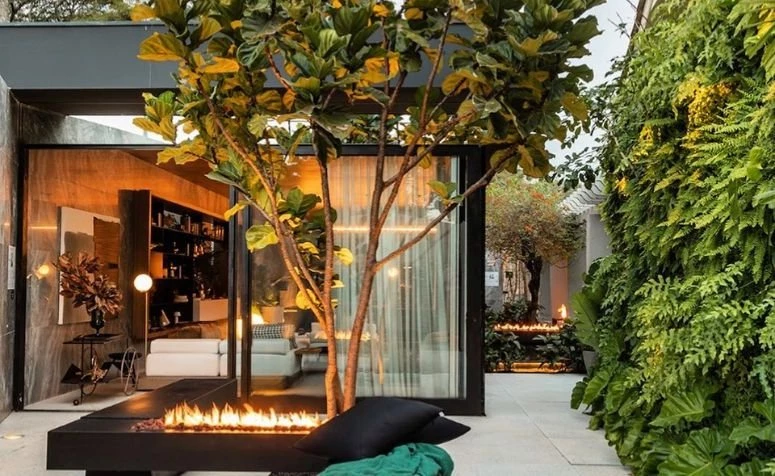
Architecture is an art that has history and that influences the way of life in different ways. After all, how can we change the way we think and build houses without changing the way we live in them and vice-versa?
About this relationship between form and use, Camila Muniz, the architect responsible for the studio C/M Arquitetura e Design explains: "The modern era began with the Industrial Revolution and the modern style is a reflection of all the advances accumulated since then, both in technology, structure, materials and, essentially, in the way of life.neutrality, whether applied to the decoration, the composition of the green areas, the colors, or the angles and shapes of the house itself.
At the same time, for those who have a tight routine, small spaces have been a solution. Whether it is an apartment or a house, daily activities are made easier in reduced areas, without leaving anything to be desired in terms of comfort.
Thinking about it, how to apply modern architecture, made and thought for our time, in small environments? Learn about the singularities of modern architecture and see tips and inspirations to translate this style in facades, green areas, and small house interiors.
Façades and gardens of small houses
"Excess does not translate the desires of this style!", emphasizes Camila when commenting on the characteristics of modern architecture, and this is true for all the spaces in the house.
Modern facades stand out for their straight lines, absence of roofs, and neutral colors.
The windows and doors also come in geometric shapes and large sizes. The garden is an integral part of the facade, since half-acre buildings are common in this architectural line, and the green areas contrast with the neutrality of the house, harmonizing the look.
Hollow elements, wood, and glass are also easily found in modern construction and give the work a special touch.
See_also: 30 pictures of kitchen shelves that will organize your decor
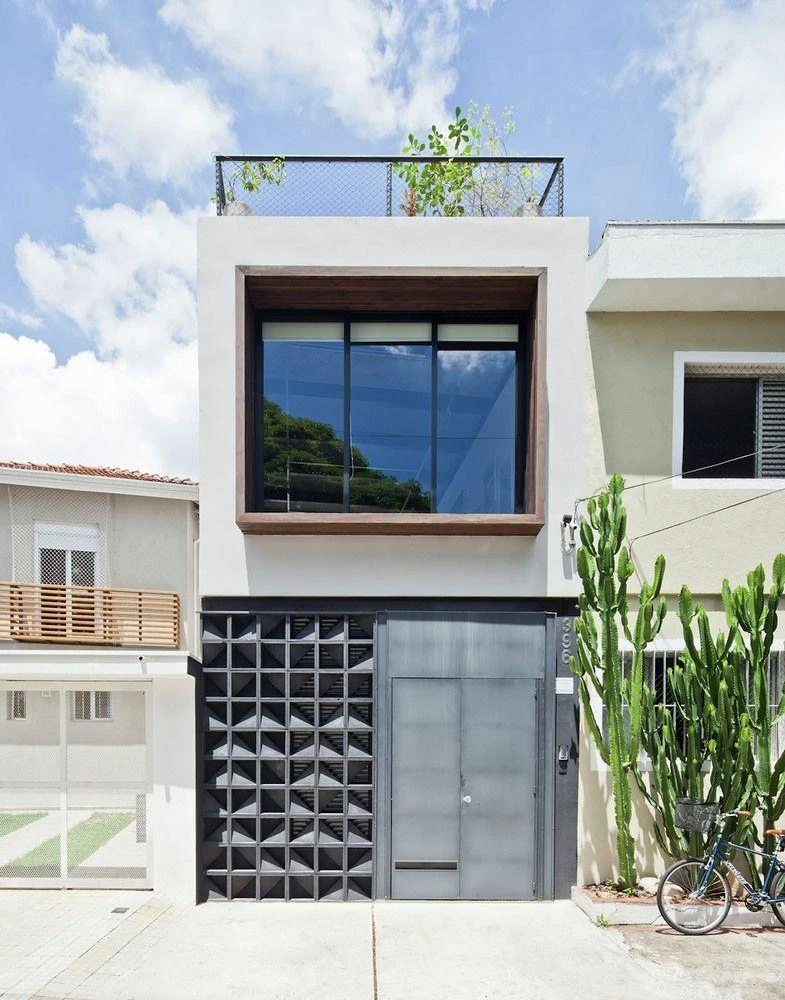
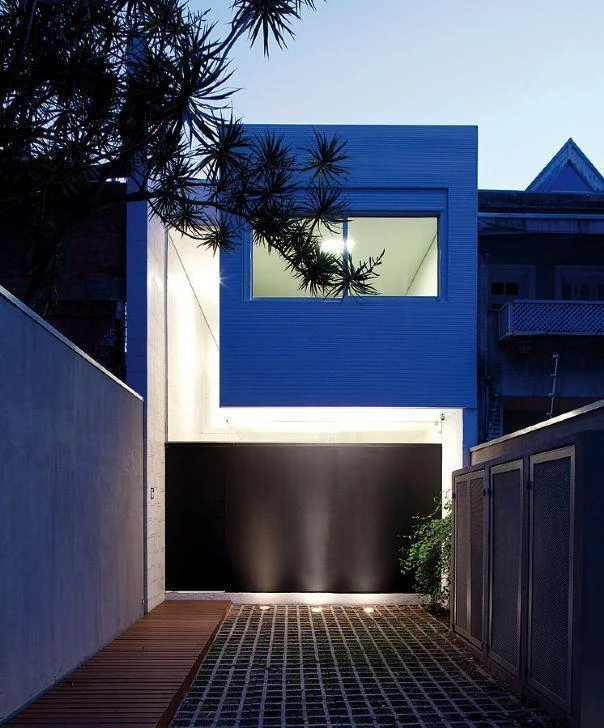
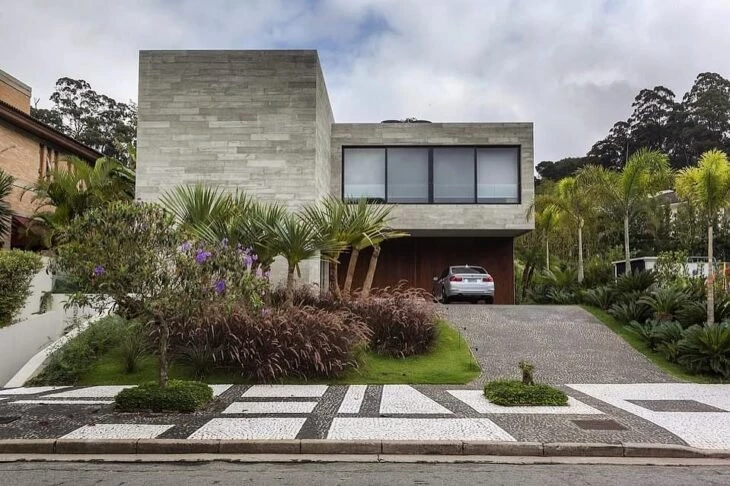
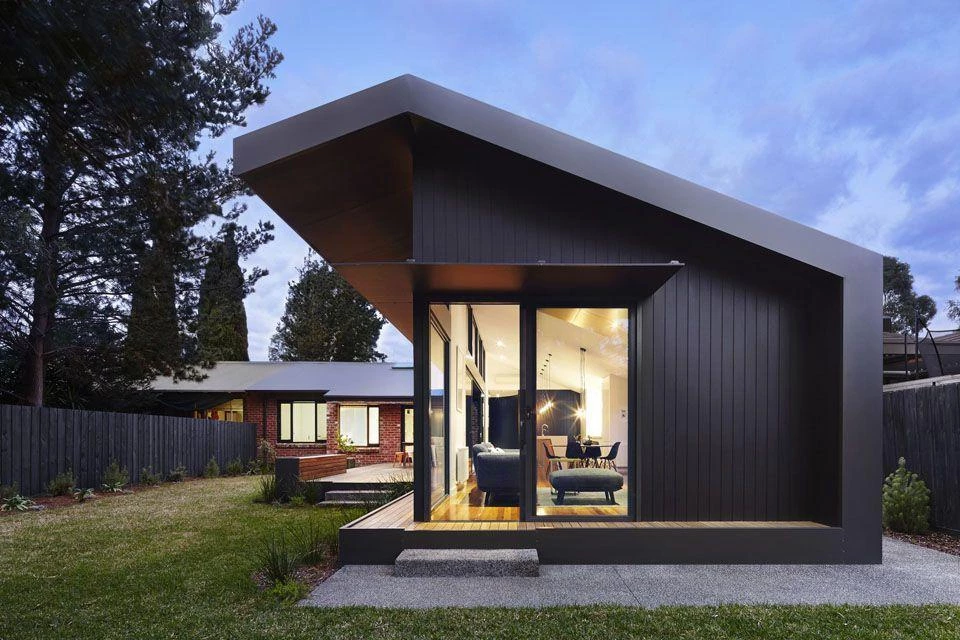
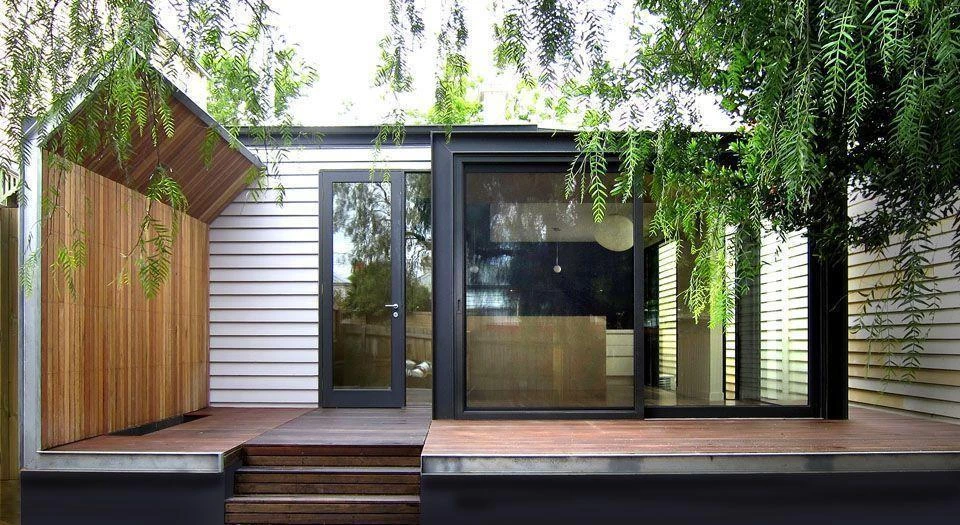
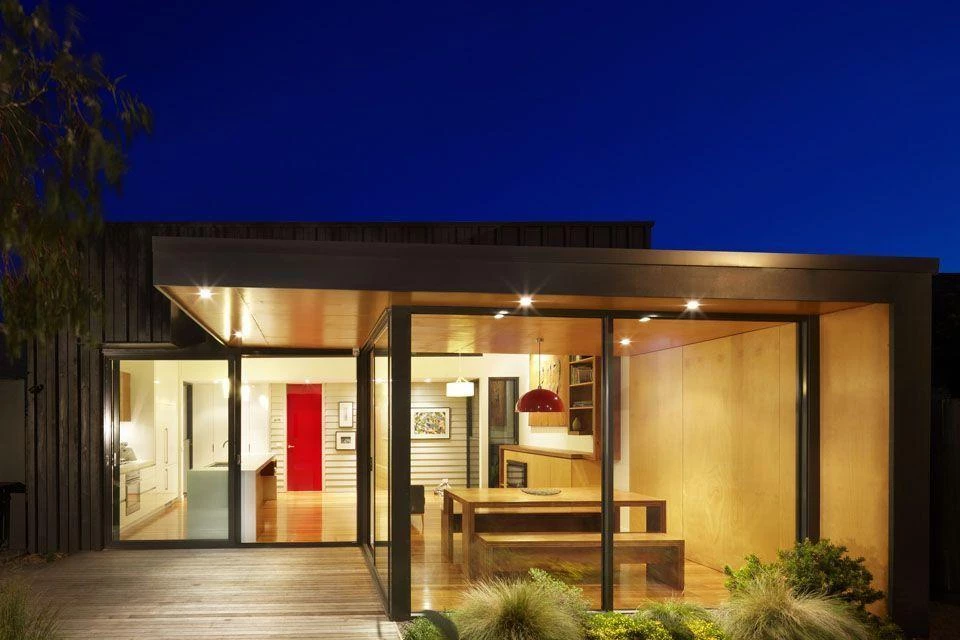
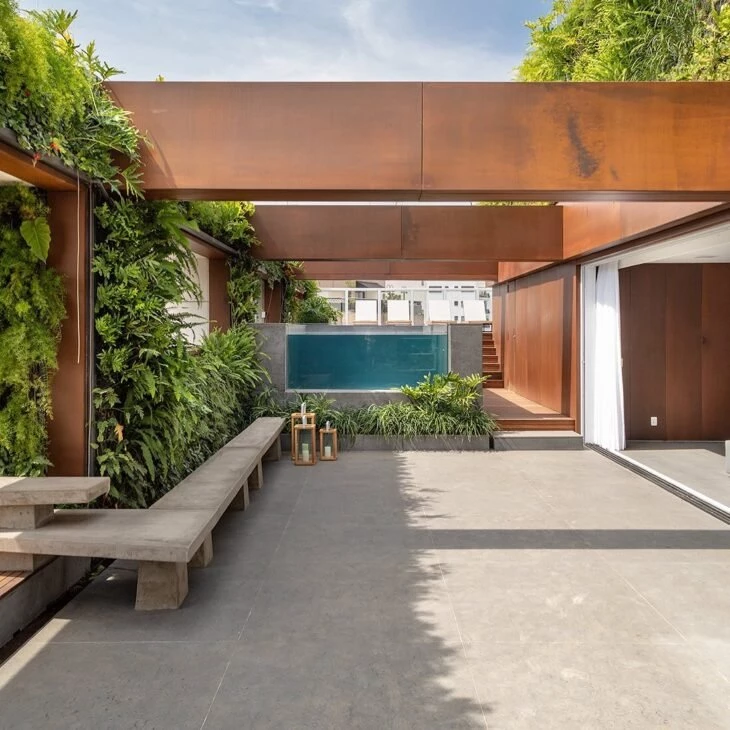
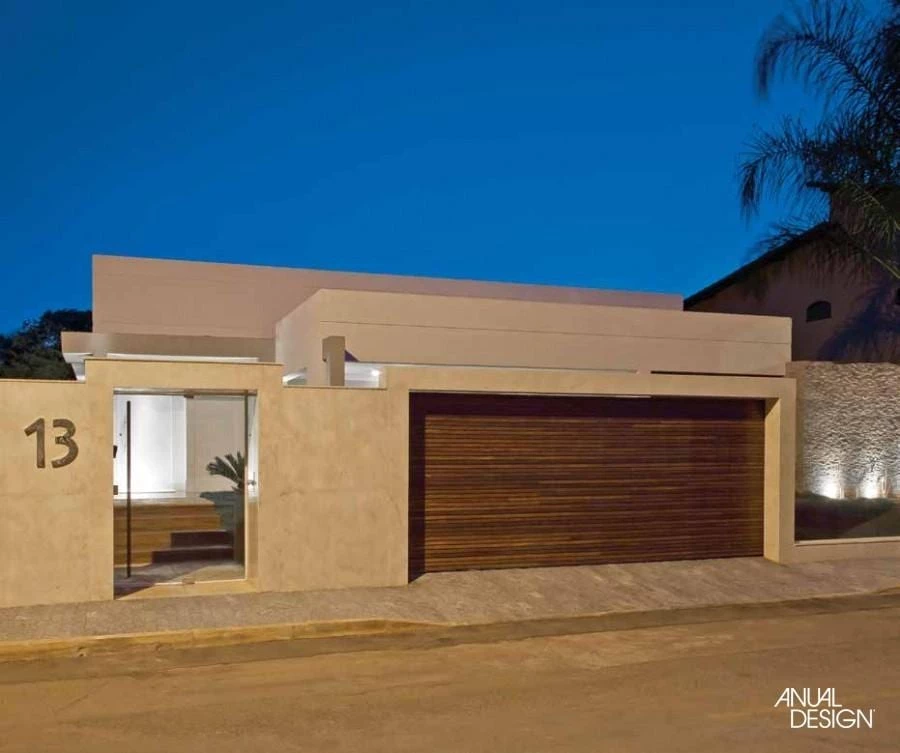
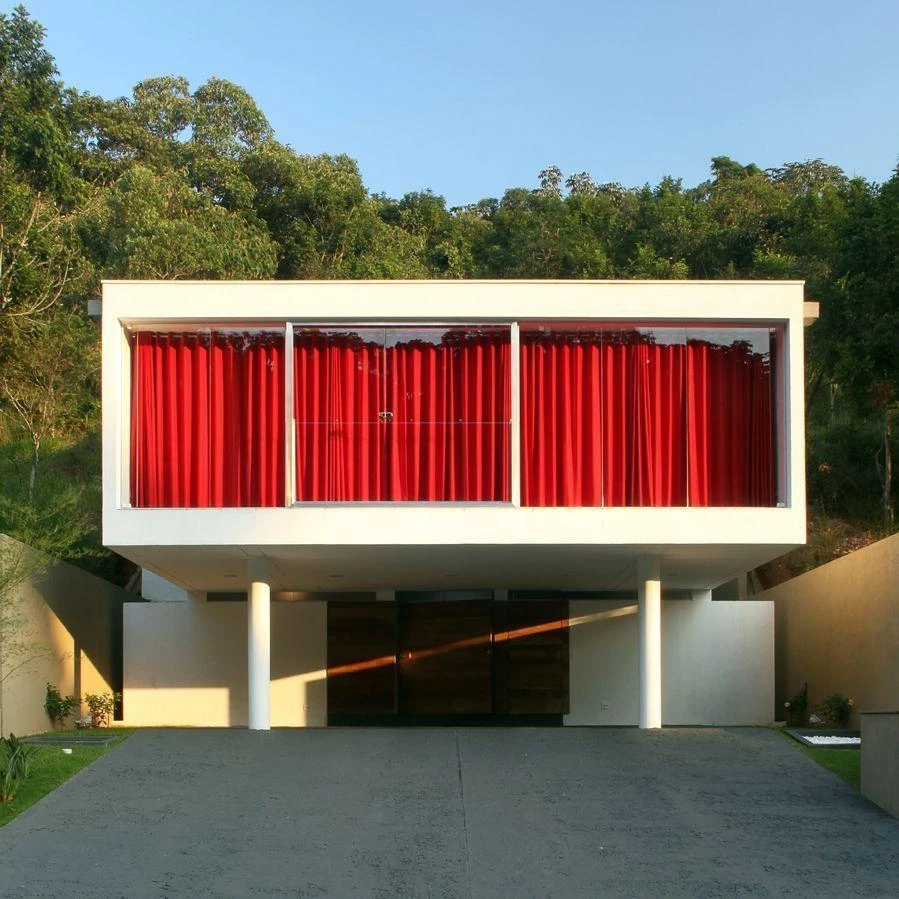
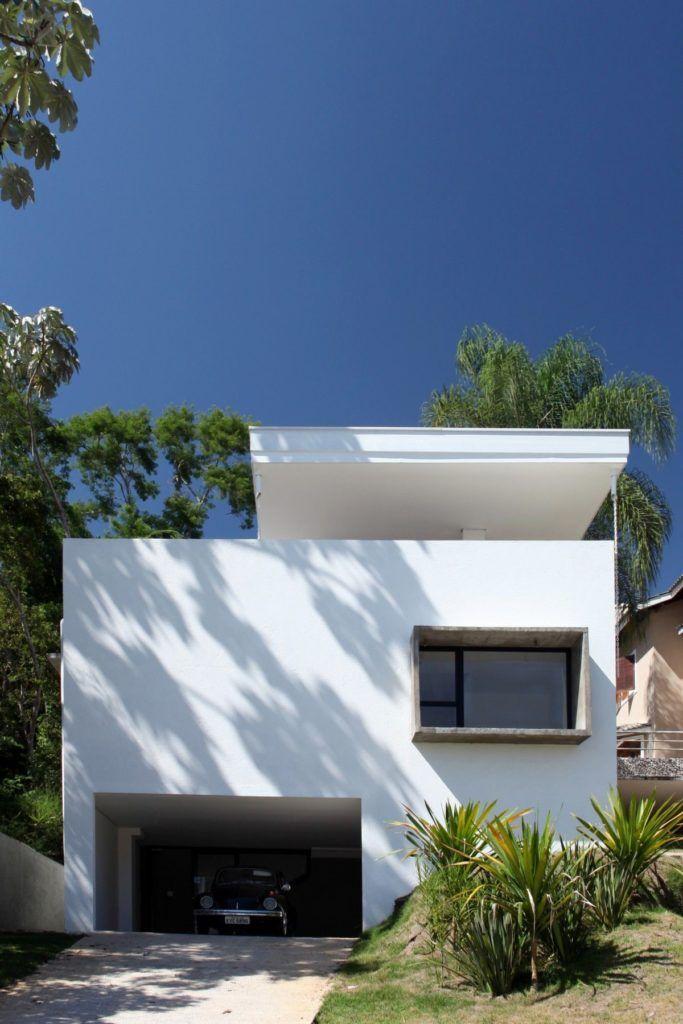
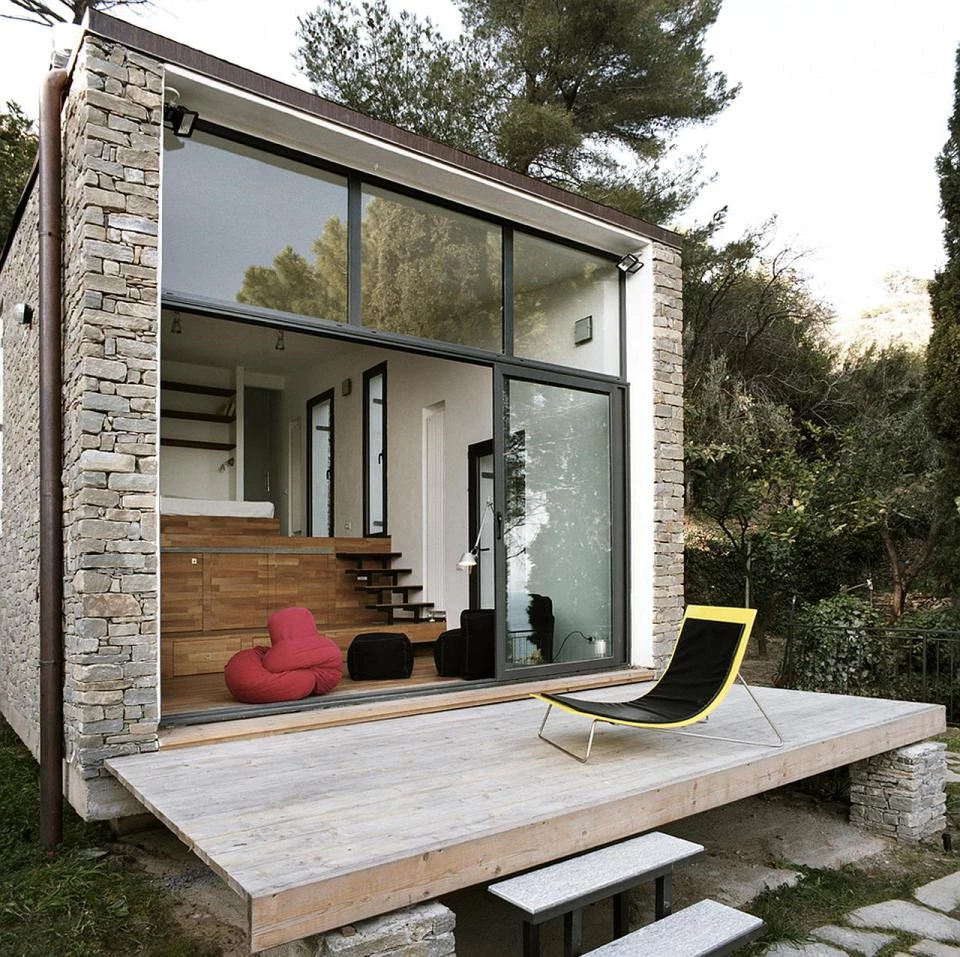
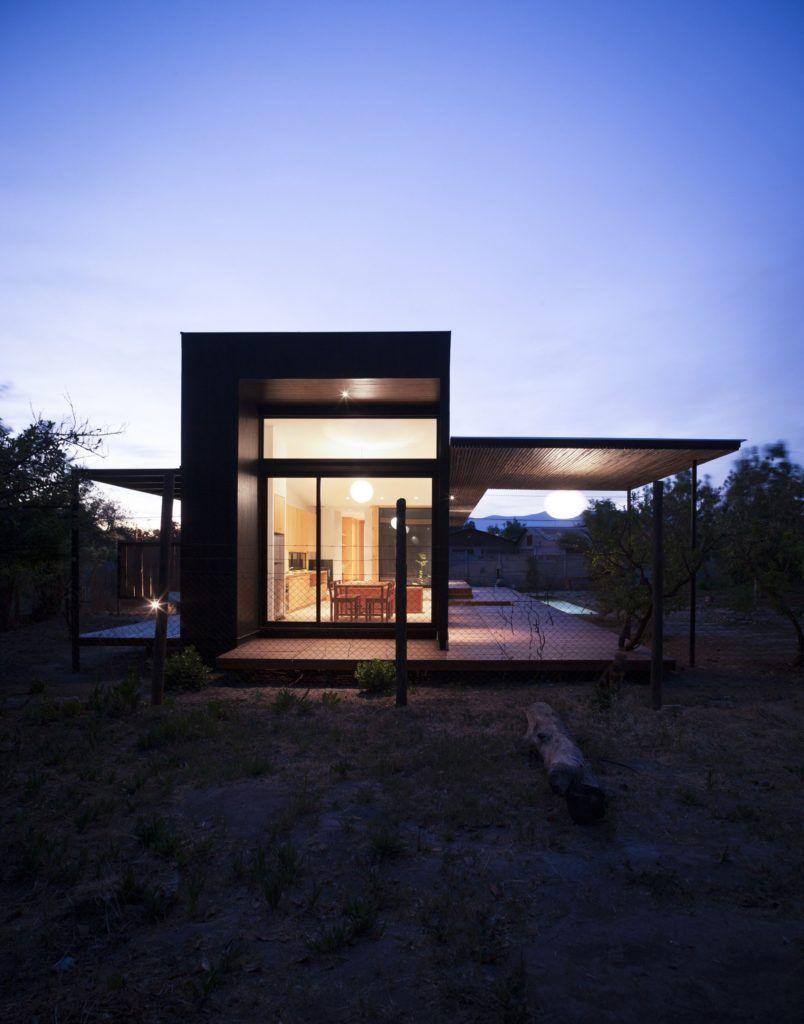
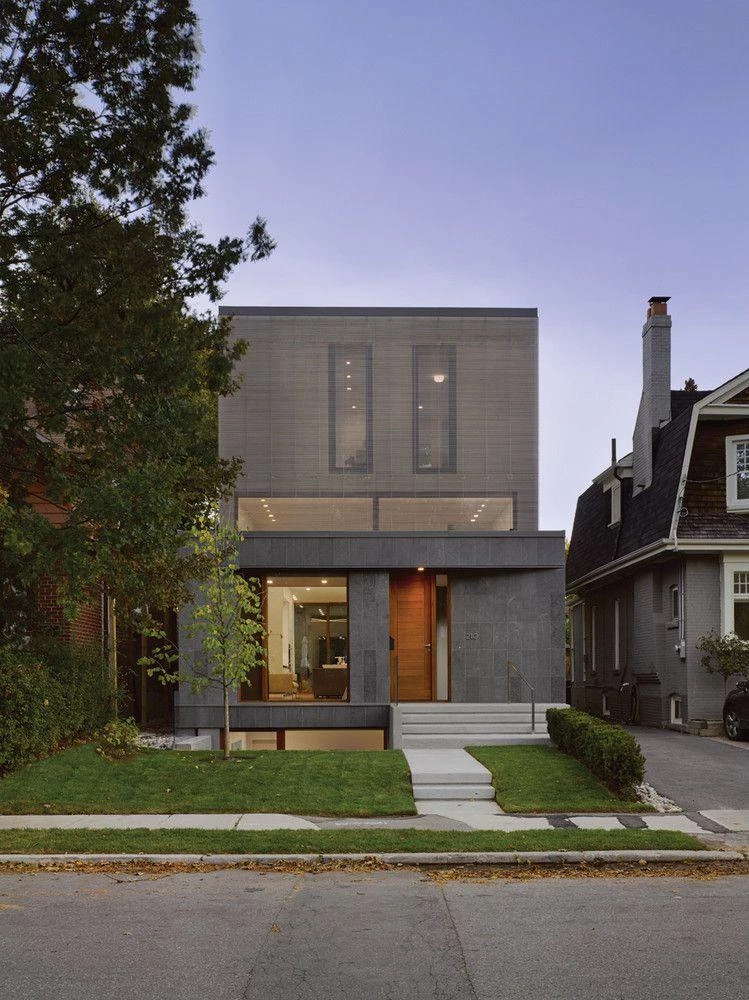
When it comes to green and leisure areas, another essential point comes into play to build a pleasant look for the house: landscaping.
See_also: 15th Anniversary party themes: see ideas for escaping the obviousAlexandre Zebral, landscape designer and owner of Zebral Paisagismo, clarifies that the garden goes beyond the plants and has the power to change the climate of the house and transmit the personality of its inhabitants.owners, which should be omnipresent in the design. The garden is emotion, and the more emotion it gives you, certainly the more enjoyable it will be."
Just like Camila, the landscape designer comments on the need to adapt to the new basics of modern life and advises to create from national elements and a line that has lightness and personality at the same time, as occurs in the works of Burle Marx, the Brazilian landscape designer cited by Alexandre as a reference, recognized for his original and artistic landscapes.
"To meet today's urban-social patterns, where new elements such as cars, bicycle paths, houses and condominiums, which require a very dynamic architecture, there is a great challenge for modern landscaping. I believe that the secret is to follow the fundamentals of the great landscaper Burle Marx: the use of free geometric shapes, native vegetation and giving up topiary. A garden withMany curves integrate with modern buildings in such a way that they are implanted as 'works of art' in the city. The native plants do not suffer from pests and the maintenance is minimal in the flowerbeds", he defends.
When asked about the application of modern landscaping in small environments, Alexandre points to vertical gardens as a solution, and says that there are specialists in this subject capable of finding the right compositions for all needs.
Regarding the choice of plants, besides supporting the valuation of native species, he advises to rely on the feeling of the space: "We must feel the 'soul' of the place, from the colors of the walls, style of construction, materials and, finally, the choice of vegetation. A tip is to pay attention to the shapes of the leaves. For example, in stressful environments are not recommended pointed leaves, while inenvironments for relaxation, undulating shapes will enhance relaxation."
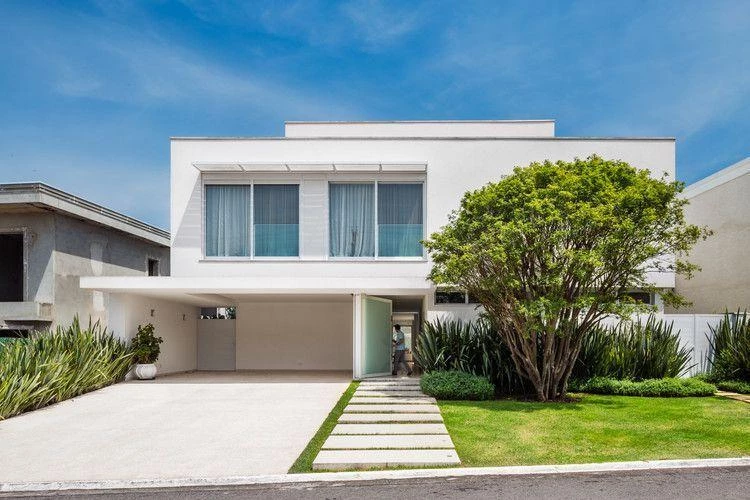
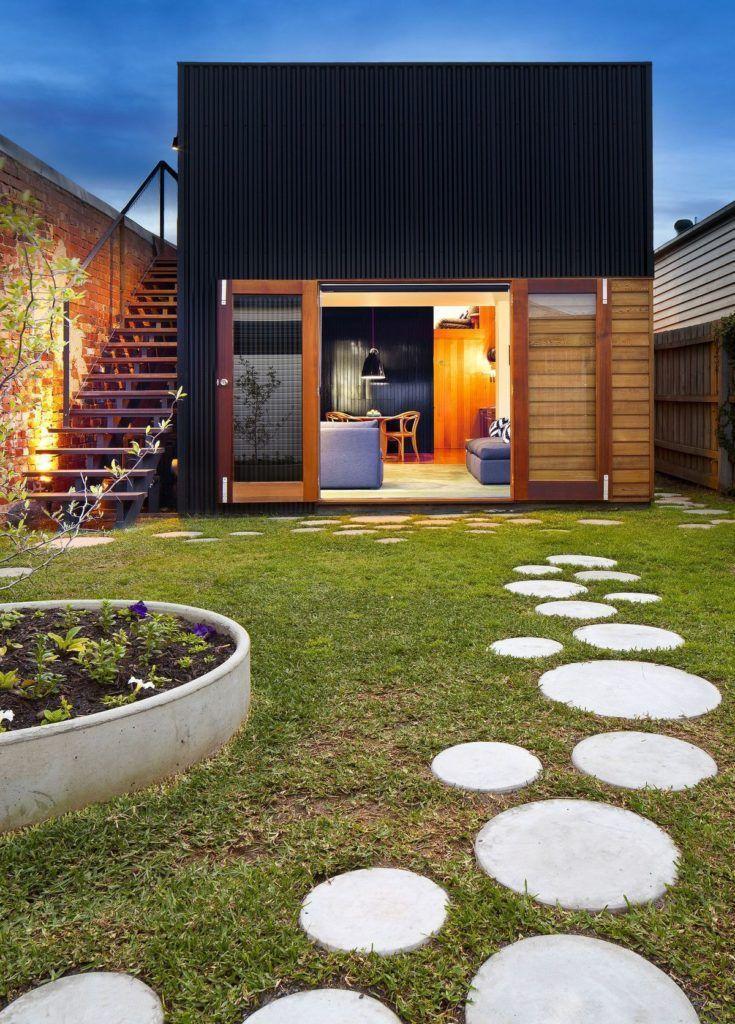
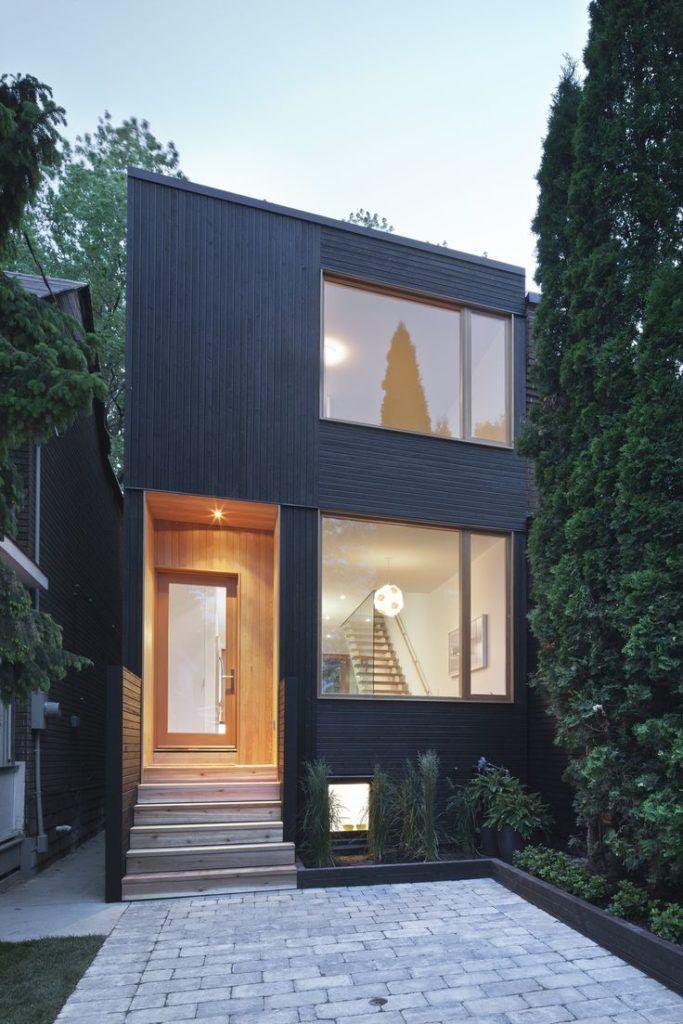
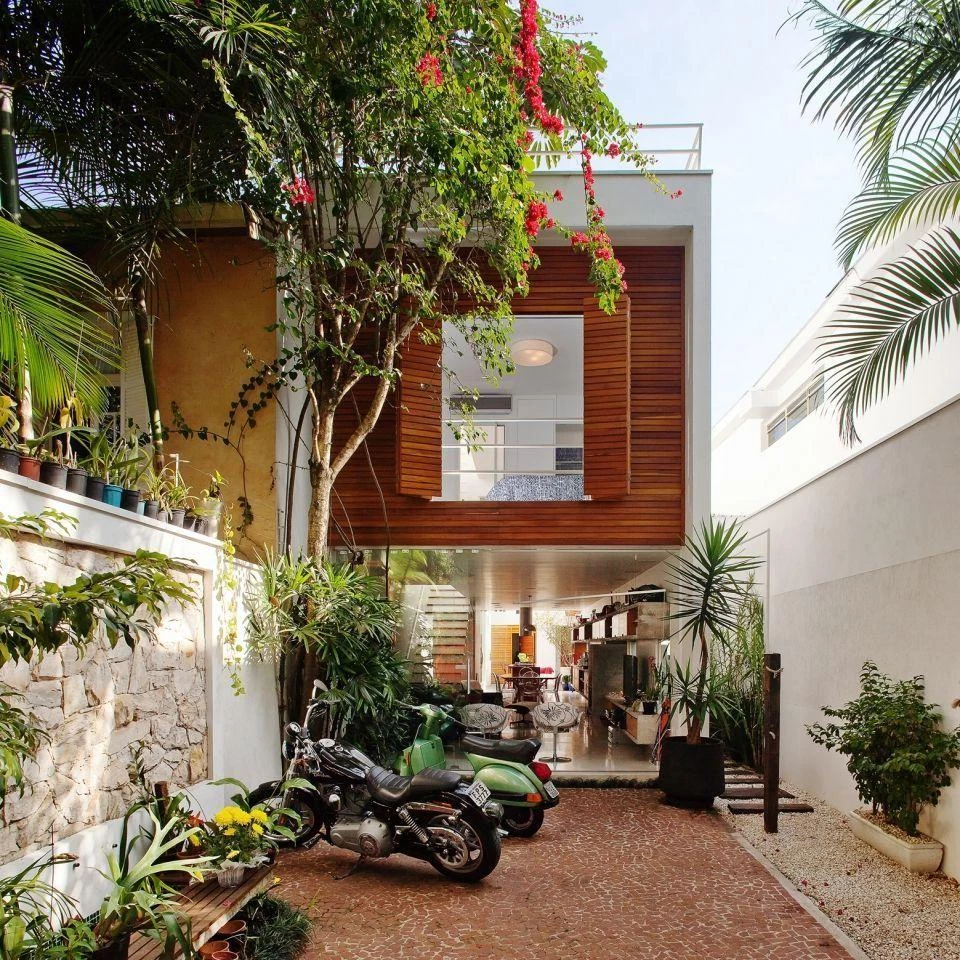
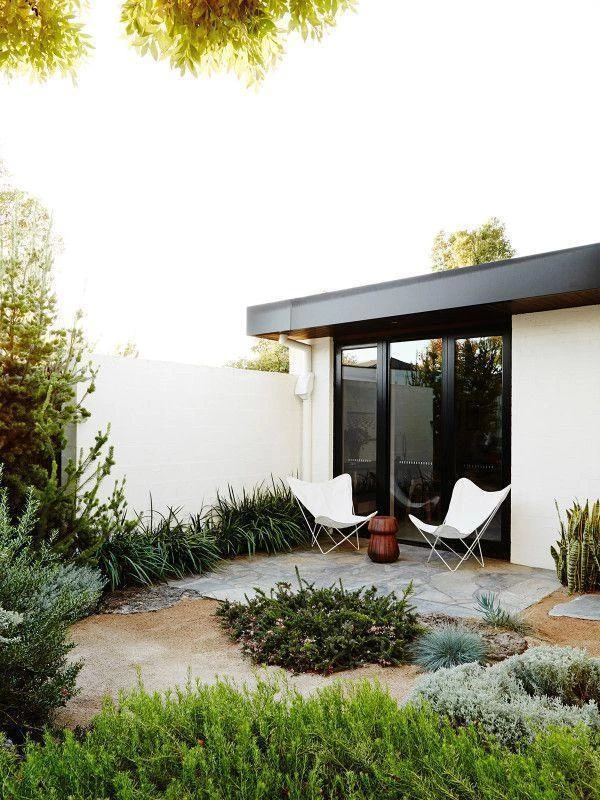
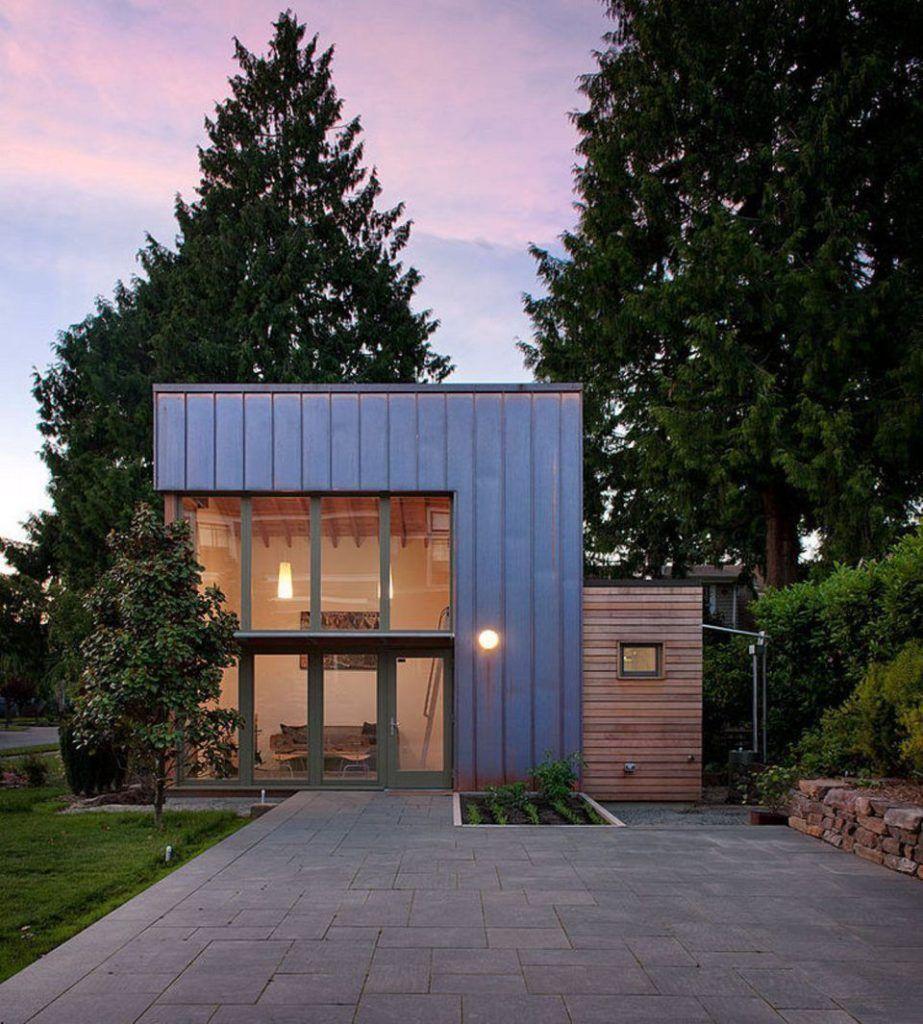
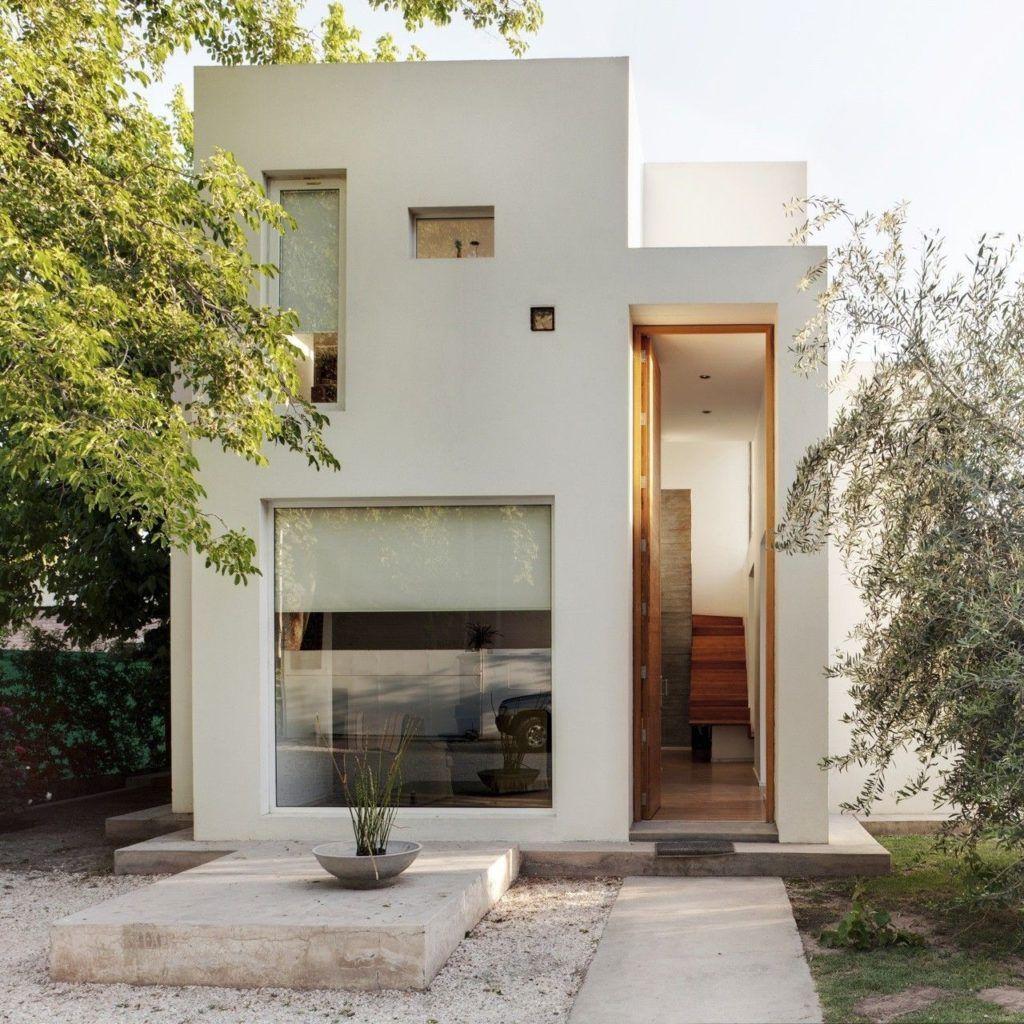
Interiors
There are famous tricks when it comes to small spaces, such as abusing mirrors, making smart use of corners, betting on floors with larger and longer pieces, and investing in light colors.
Besides the more traditional tips related to optimizing and enlarging (the feeling) of spaces, there are characteristics of modern design that can be applied to interiors and reconcile the style with the small environment:
Sobriety
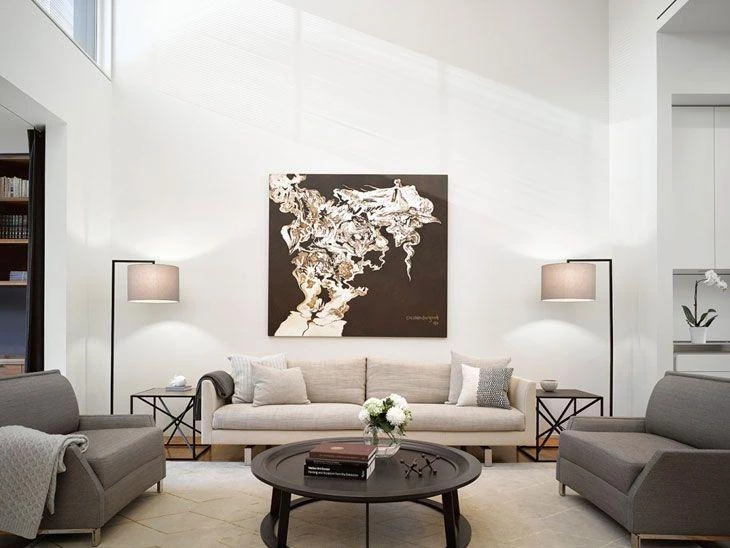
Sobriety is very characteristic of modernism, for besides preaching the reduction of ornamentation and excess, this style is translated by environments in neutral colors and with few furniture and ornaments, the form and the material gain importance, as well as the usefulness of the objects. "Sophistication is in the perception of the materials and in the harmony of the compositions", Camila Muniz highlights.
"Modern colors are neutral (white, gray, sand) to allow the use of more striking shades in accessories, such as puffes, cushions, rugs, works of art, this is a great tip, because these items, if replaced, give a new ambiance without the need for reform", adds the architect.very striking patterns, because the clean touch is the key point of a modern environment.
Functionality
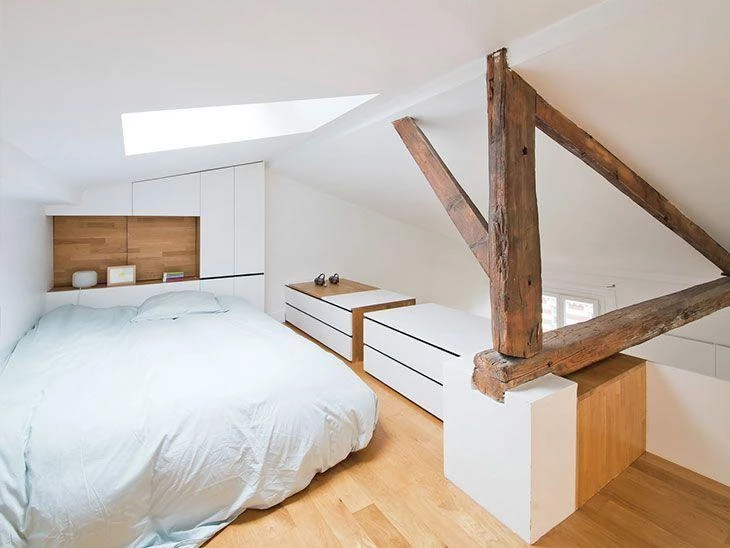
When it comes to thinking about the decoration and the arrangement of the spaces, specialist Camila Muniz advises considering the function of the room and selecting the objects based on this in a more rational way.
"The living room, for example, should have the most comfortable furniture possible, because that is its intended use," he explains.
With regard to small environments, it is easy to think of them as functional, since there is no room for unnecessary furniture or items. You just have to pay attention to the spaces destined for circulation and keep the balance between functionality and comfort.
Integrated environments

Integrated environments are a good way to take advantage of space and make it multipurpose, increasing its functionality. Integrated environments are also cozier, since they allow contact between the inhabitants of the house, even if they are, in a way, in different rooms.
Furthermore, through integration, it is possible to equalize the decorative lines of the environments and create a more defined identity for the house.
Horizontality

The straight and long lines are characteristics of this architectural style, although it is not possible in several long pieces of furniture in small environments, Camila advises that it is possible to horizontalize the compositions.
You can invest in some strategic element in each room, such as a longer sink or a kitchen cabinet without external divisions, a rug, or a long sofa.
4 Inspiring Small, Modern House Designs
Check out some modern style tiny house designs and get inspired by both the structure and the interior:
1. 1220 House, by Alex Nogueira
With only 45 m², this project is a great example of the use of geometric and horizontal facade even in small houses. The plan is composed of only one module that is divided internally between living, resting, and eating areas, but always thinking about the integration of the environments.
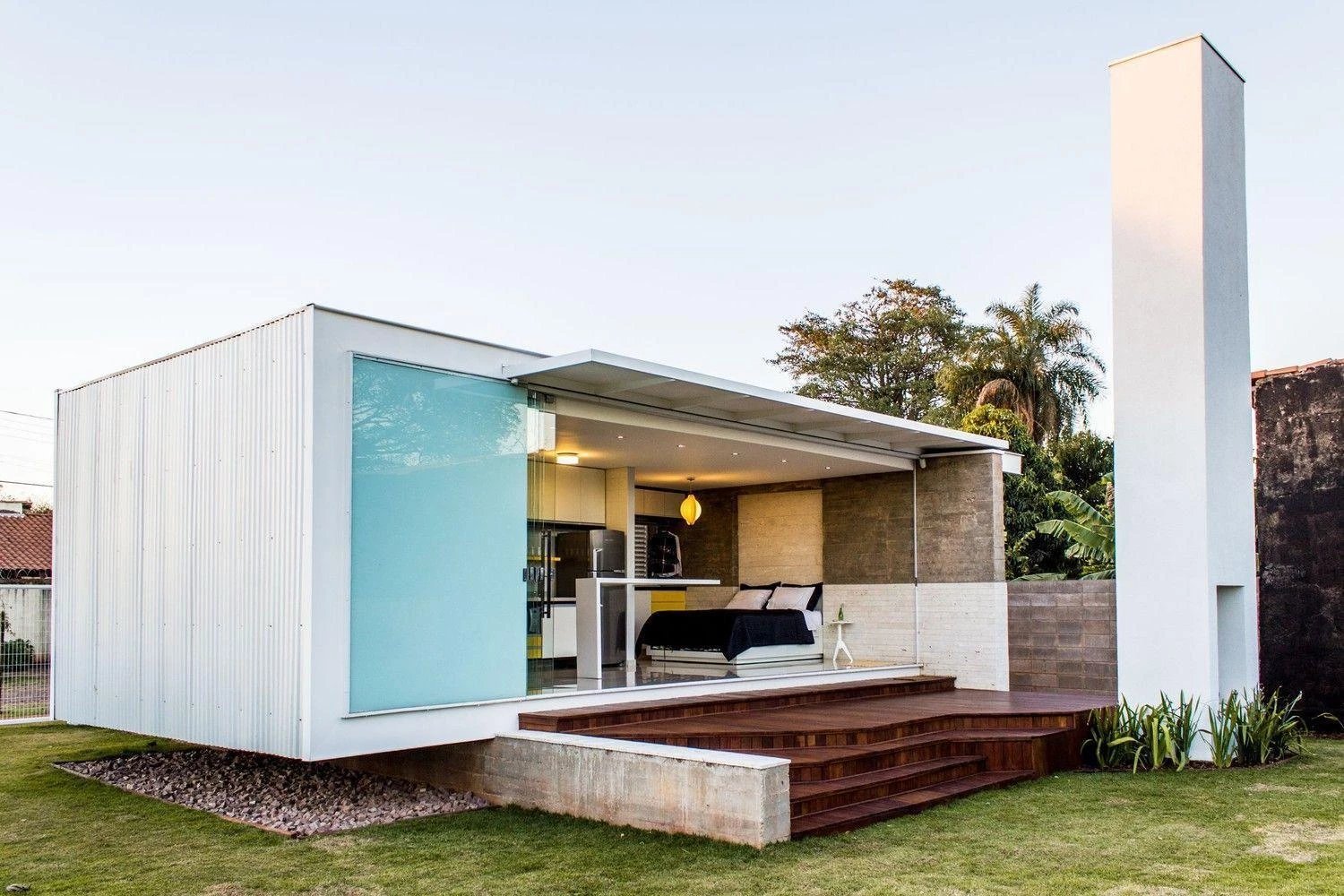
Photo: Reproduction / Alex Nogueira
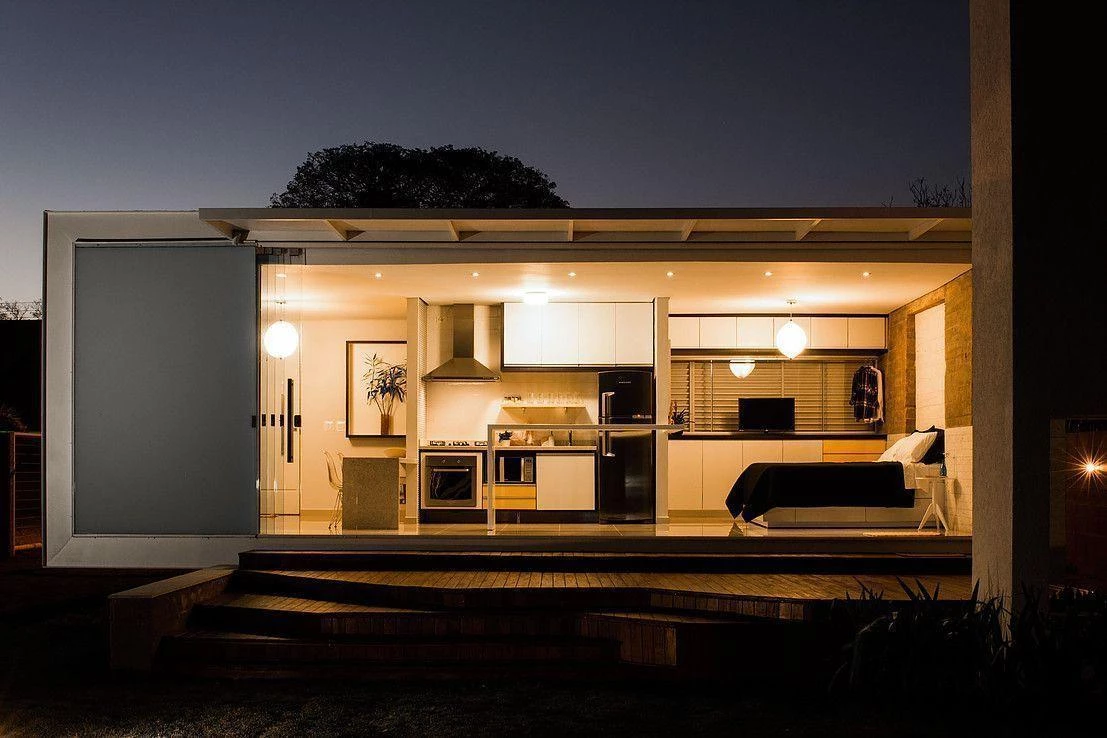
Photo: Reproduction / Alex Nogueira
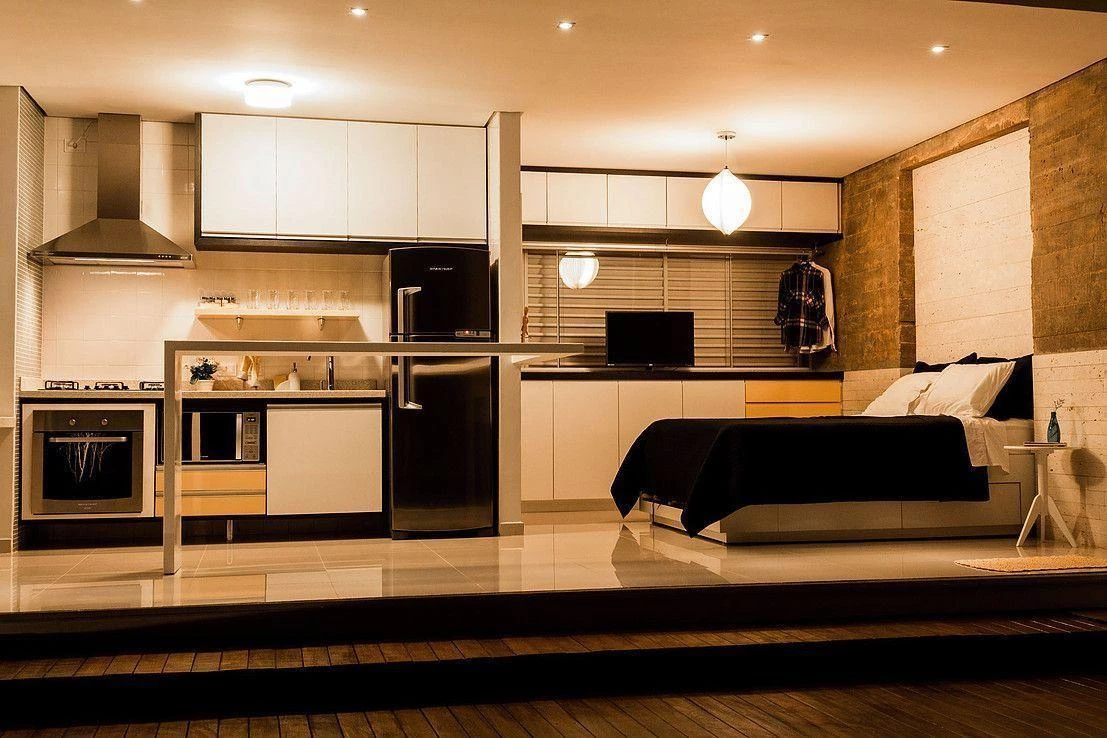
Photo: Reproduction / Alex Nogueira

Photo: Reproduction / Alex Nogueira
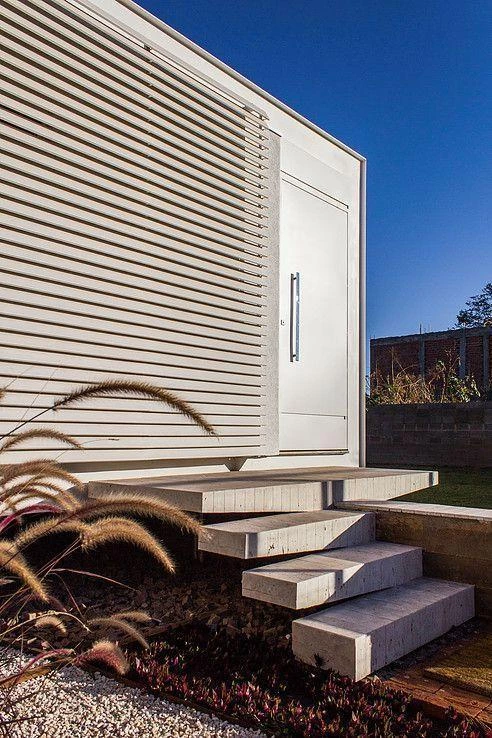
Photo: Reproduction / Alex Nogueira

Photo: Reproduction / Alex Nogueira
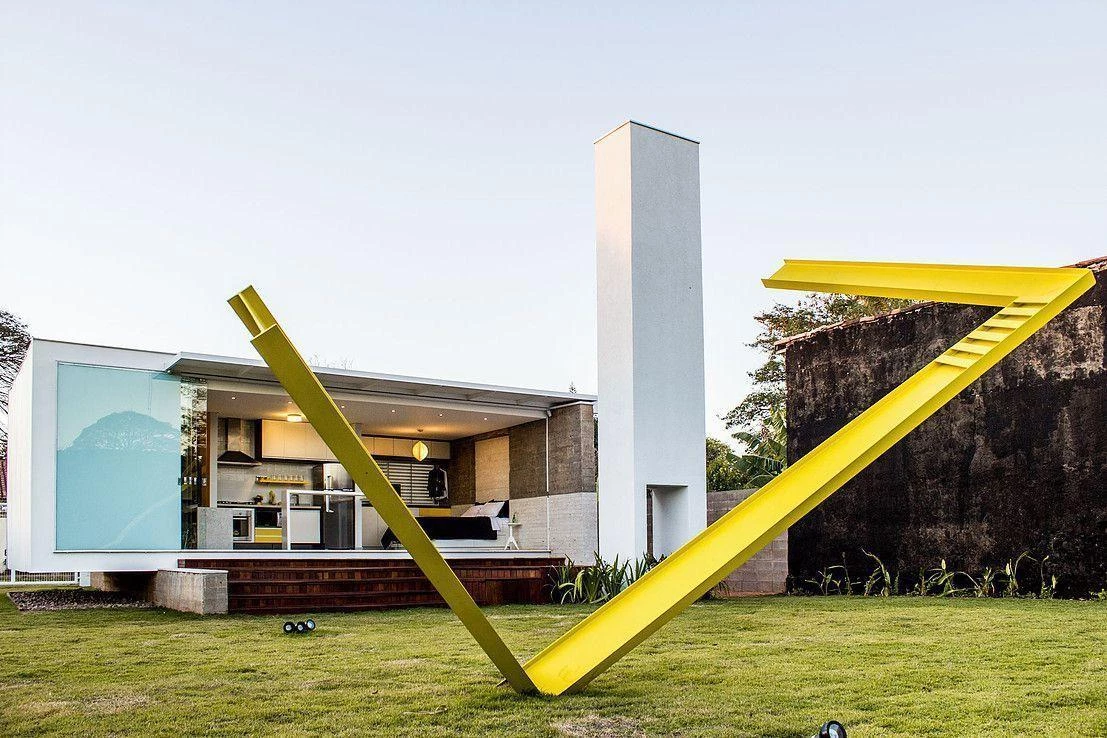
Photo: Reproduction / Alex Nogueira
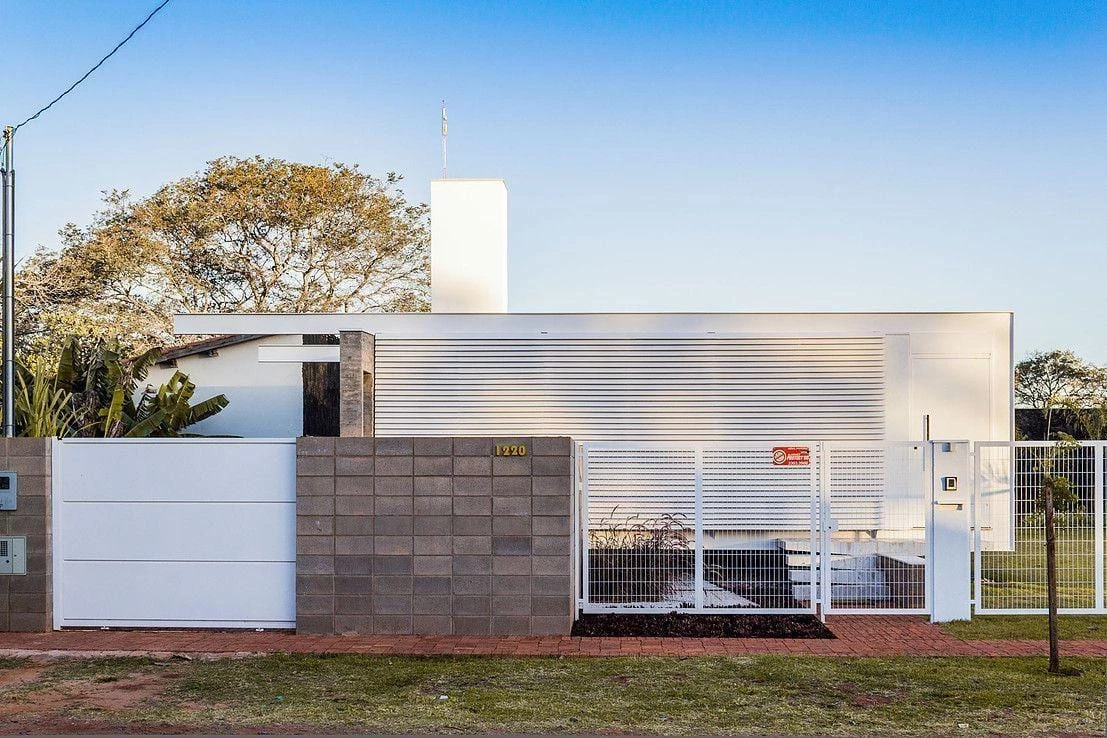
Photo: Reproduction / Alex Nogueira
The metallic structure, the white and glass facade, and the recurrent use of concrete complete the modern personality of the house. The color yellow, present in different elements of the house, brings a touch of fun to the project.
2.Casa Vila Matilde, by Terra e Tuma Arquitetos
This house is inspiring not only for its intelligent design that charmingly combines modern architecture, industrial style, and limited space, but also because it is a low-budget project designed to change the reality of its residents.

Photo: Reproduction / Alex Nogueira

Photo: Reproduction / Alex Nogueira

Photo: Reproduction / Alex Nogueira

Photo: Reproduction / Alex Nogueira

Photo: Reproduction / Alex Nogueira

Photo: Reproduction / Alex Nogueira

Photo: Reproduction / Alex Nogueira

Photo: Reproduction / Alex Nogueira
The plot is 25 m deep and 4.8 m wide, the project totals 95 m² in area due to the second floor. Besides the rooms to meet Dona Dalva's needs (living room, kitchen, suite, toilet and service area), the house has, on the second floor, a guest bedroom and a vegetable garden, and on the ground floor, a small patio integrated with the garden, a space designed to bring lighting and a touchgreen for the environment.
3. gable house, by Nic Owen
This house is also a creation of the Nic Owen architectural firm and, like the previous project, has a distinctive and very geometric design. The spaces are integrated and endowed with a unique simplicity.

Photo: Reproduction / Alex Nogueira

Photo: Reproduction / Alex Nogueira

Photo: Reproduction / Alex Nogueira

Photo: Reproduction / Alex Nogueira

Photo: Reproduction / Alex Nogueira

Photo: Reproduction / Alex Nogueira

Photo: Reproduction / Alex Nogueira

Photo: Reproduction / Alex Nogueira
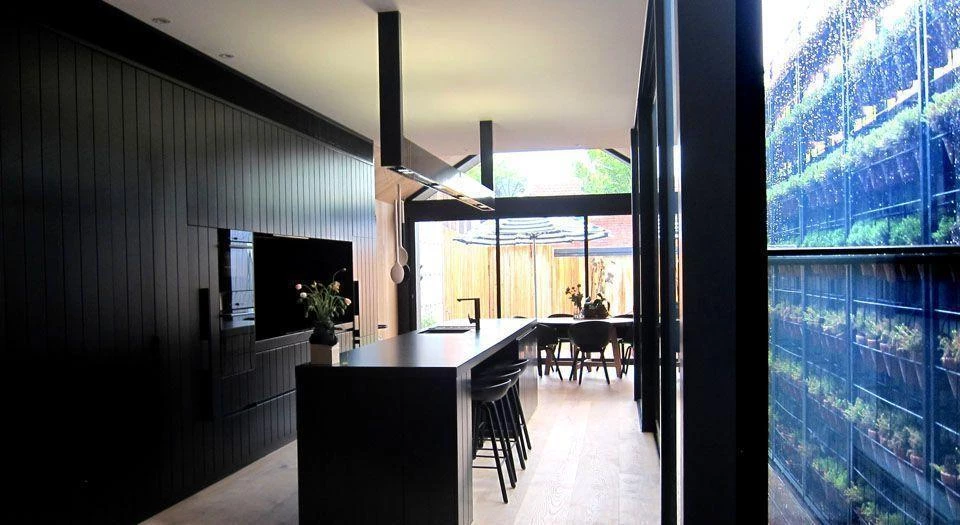
Photo: Reproduction / Nic Owen Architects
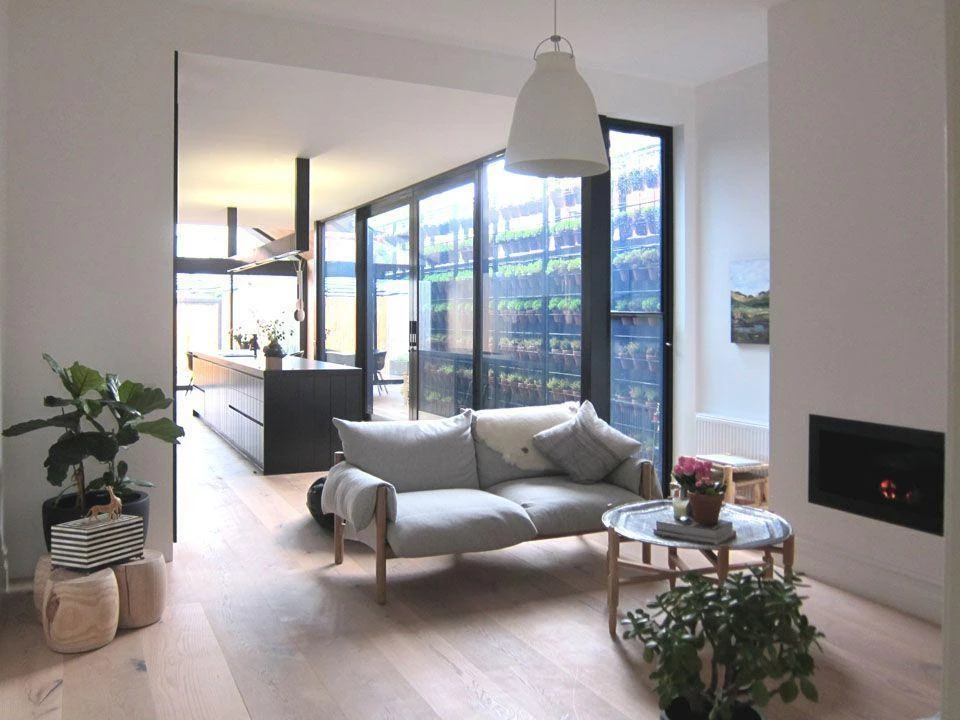
Photo: Reproduction / Nic Owen Architects
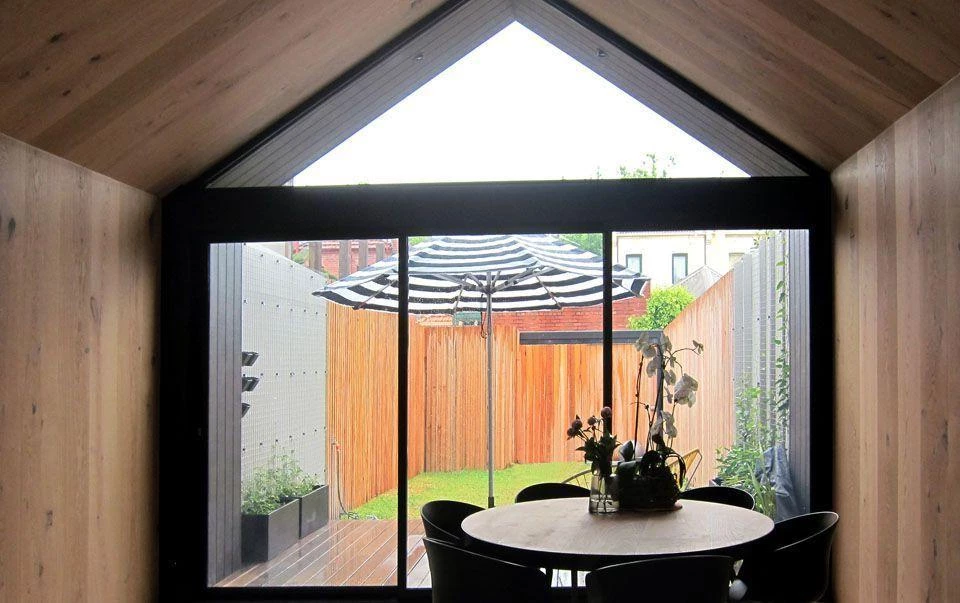
Photo: Reproduction / Nic Owen Architects
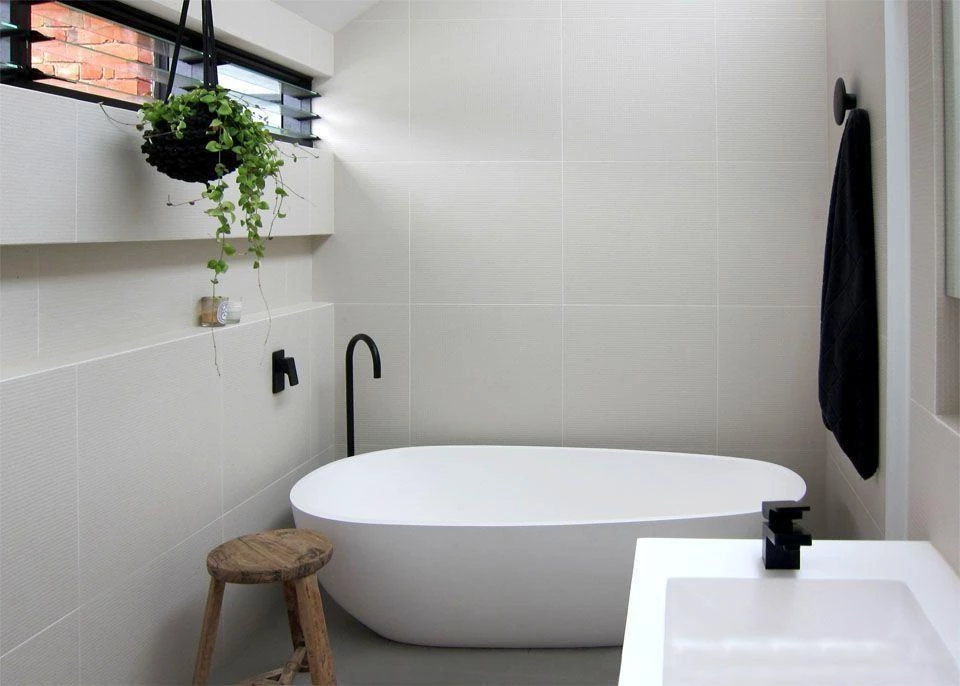
Photo: Reproduction / Nic Owen Architects
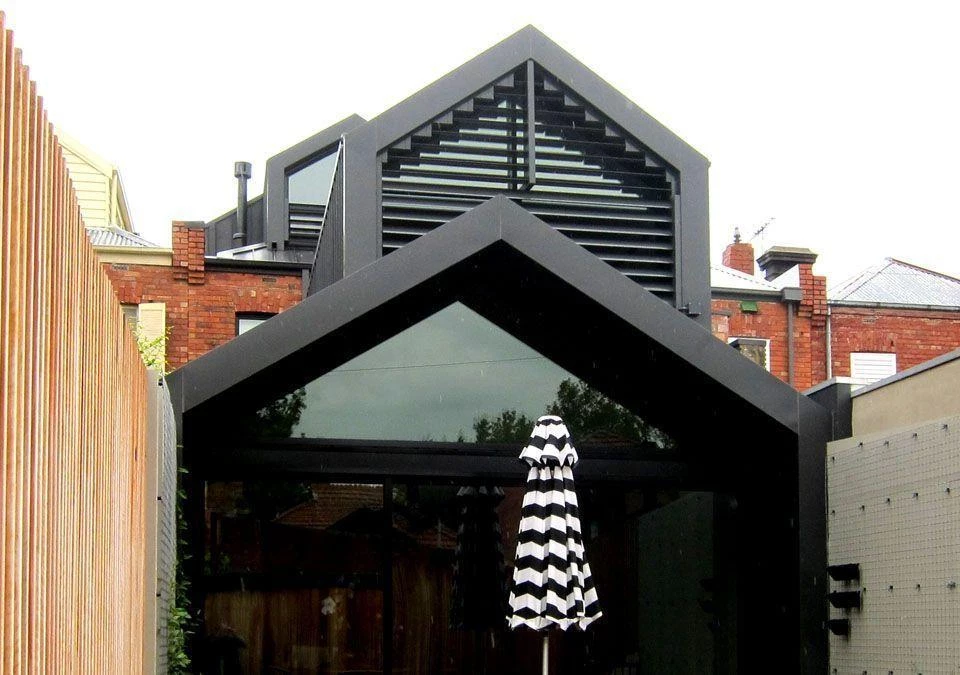
Photo: Reproduction / Nic Owen Architects
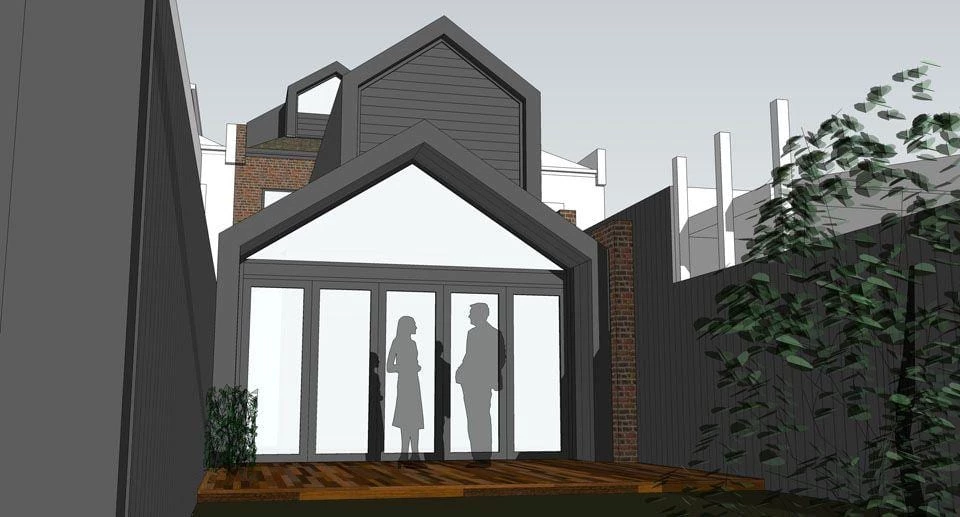
Photo: Reproduction / Nic Owen Architects
The interior features a lot of wood, glass, and neutral colors (gray, black, and white). Another cool idea present in this project is the vertical garden, which completes the decoration of the house.
4. Casa Solar da Serra, by 3.4 Arquitetura
With a horizontal facade and 95 square meters, this house is a great inspiration for those who like integrated environments, but not in such a way that all rooms are in a single environment.

Photo: Reproduction / Alex Nogueira

Photo: Reproduction / Alex Nogueira

Photo: Reproduction / Alex Nogueira

Photo: Reproduction / Alex Nogueira

Photo: Reproduction / Alex Nogueira

Photo: Reproduction / Alex Nogueira

Photo: Reproduction / Alex Nogueira

Photo: Reproduction / Alex Nogueira

Photo: Reproduction / Nic Owen Architects

Photo: Reproduction / Nic Owen Architects

Photo: Reproduction / Nic Owen Architects

Photo: Reproduction / Nic Owen Architects

Photo: Reproduction / Nic Owen Architects

Photo: Reproduction / Nic Owen Architects
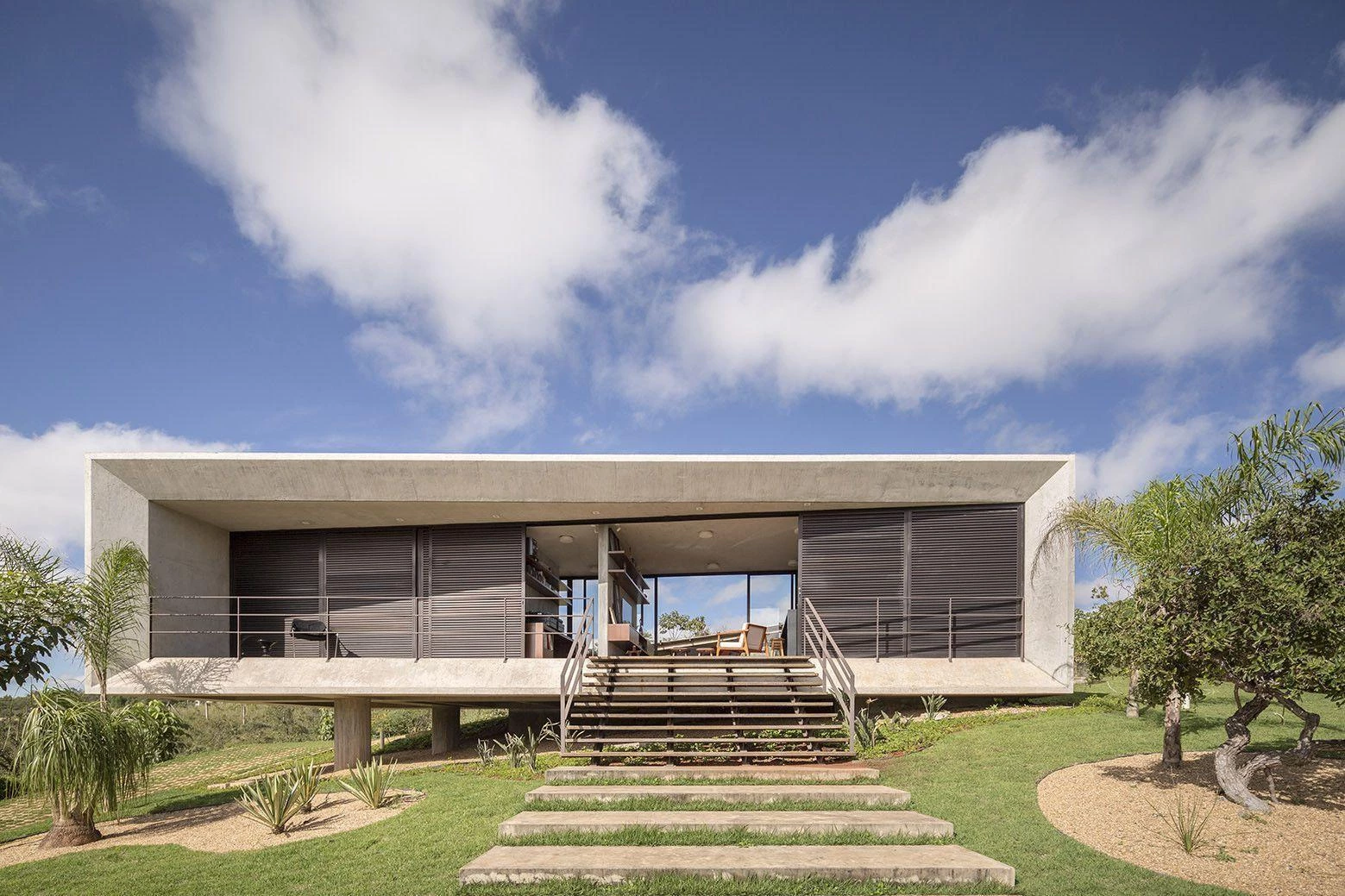
Photo: Reproduction / 3.4 Architecture
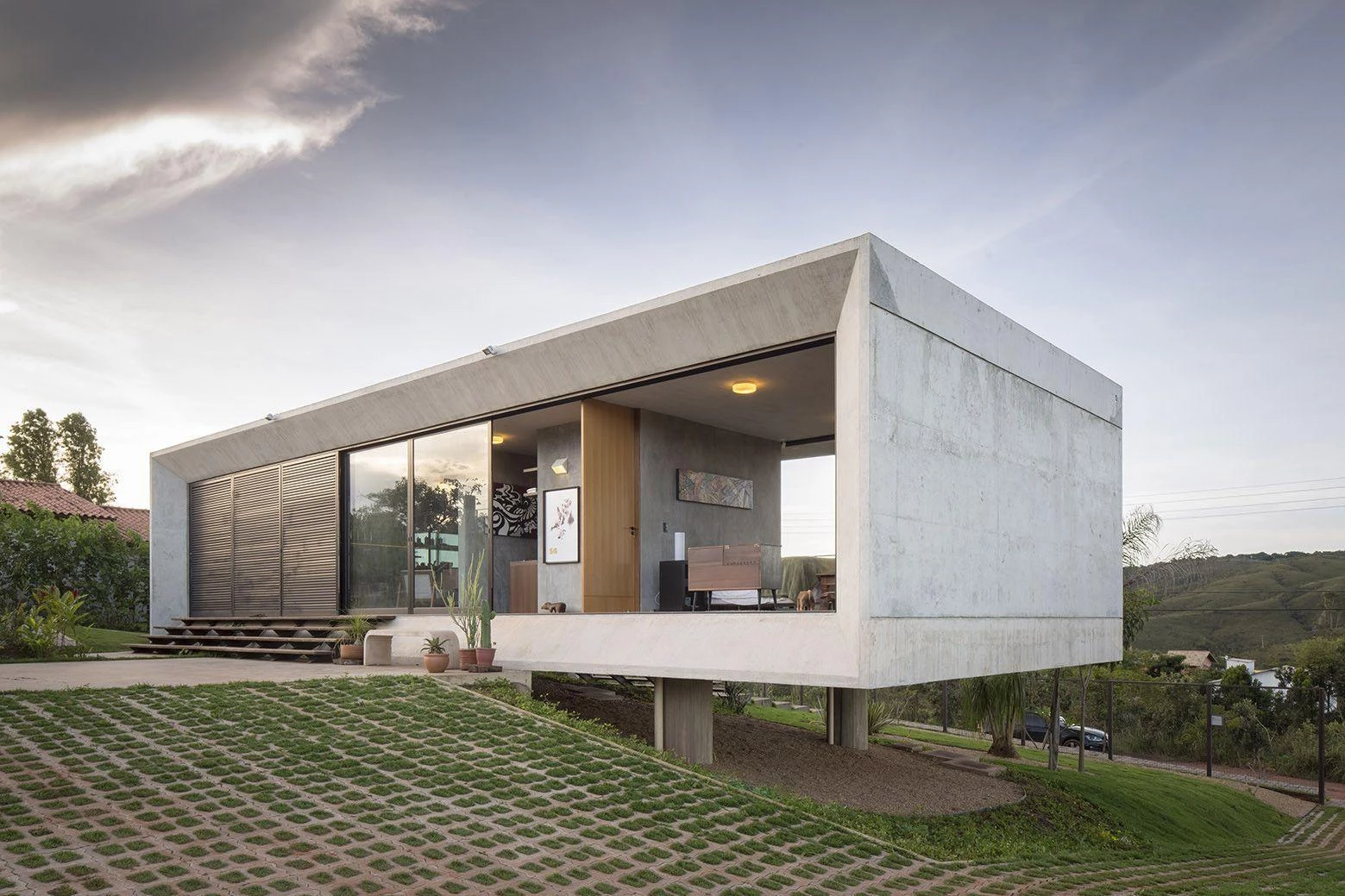
Photo: Reproduction / 3.4 Architecture
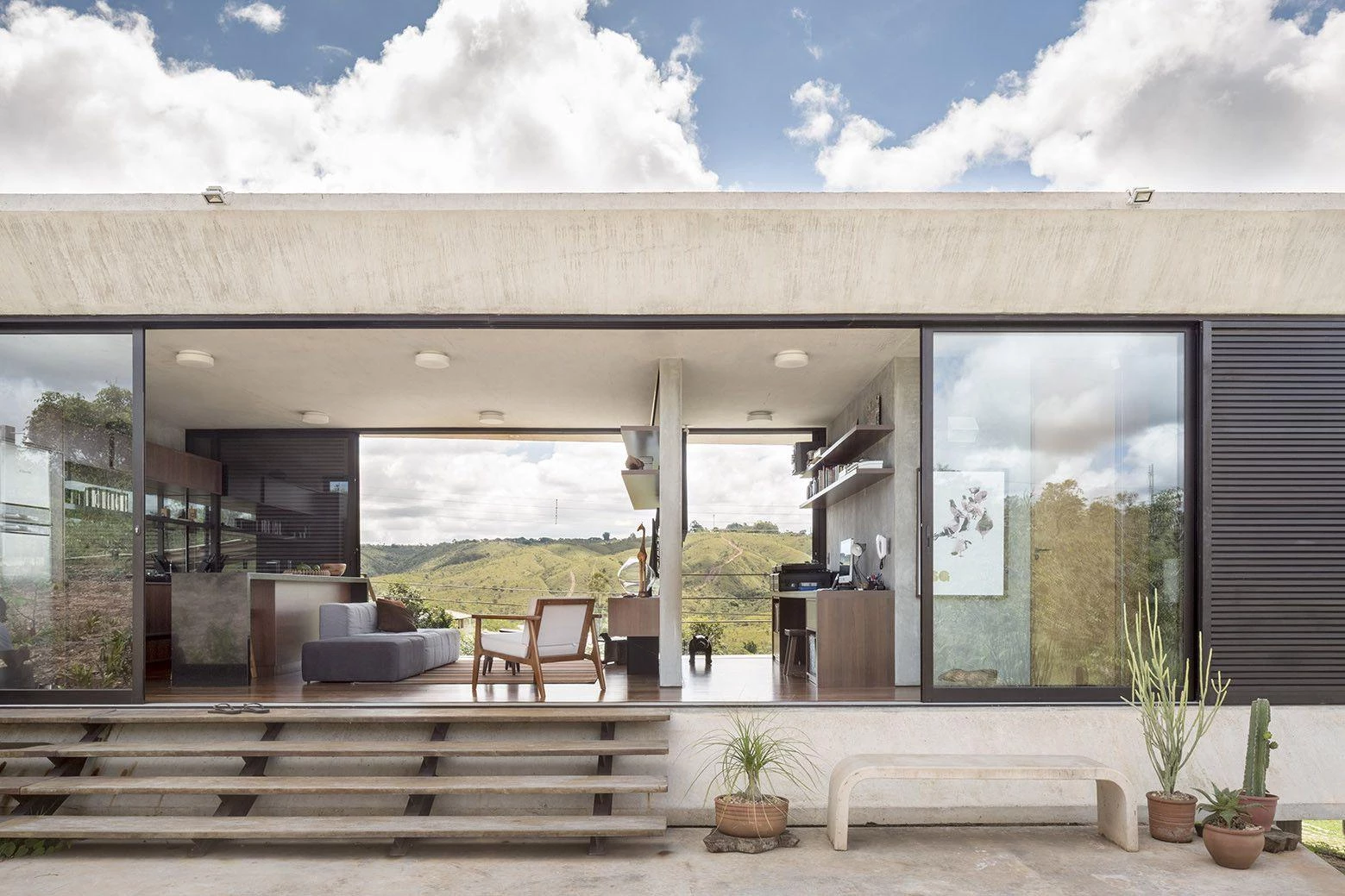
Photo: Reproduction / 3.4 Architecture
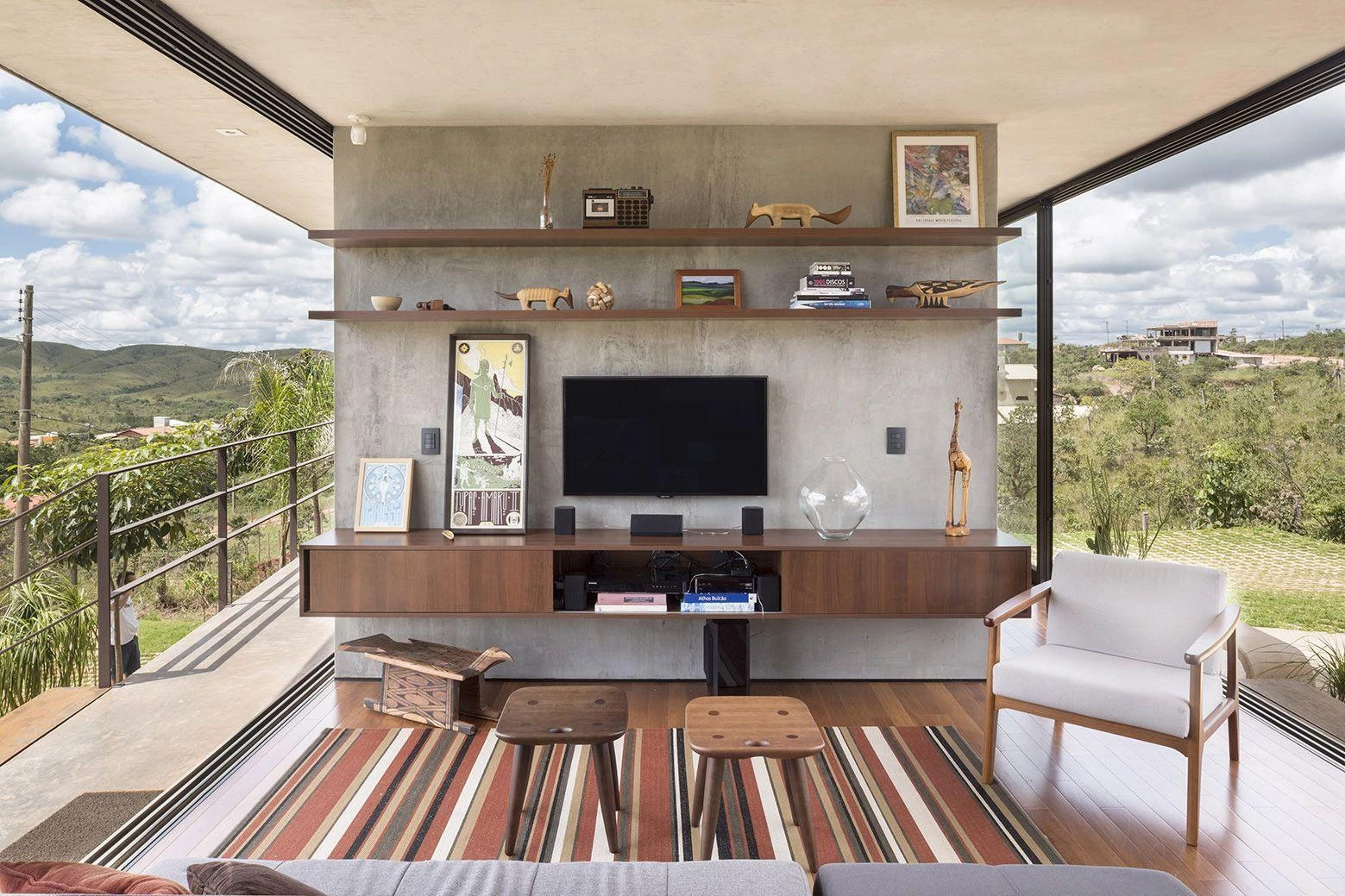
Photo: Reproduction / 3.4 Architecture
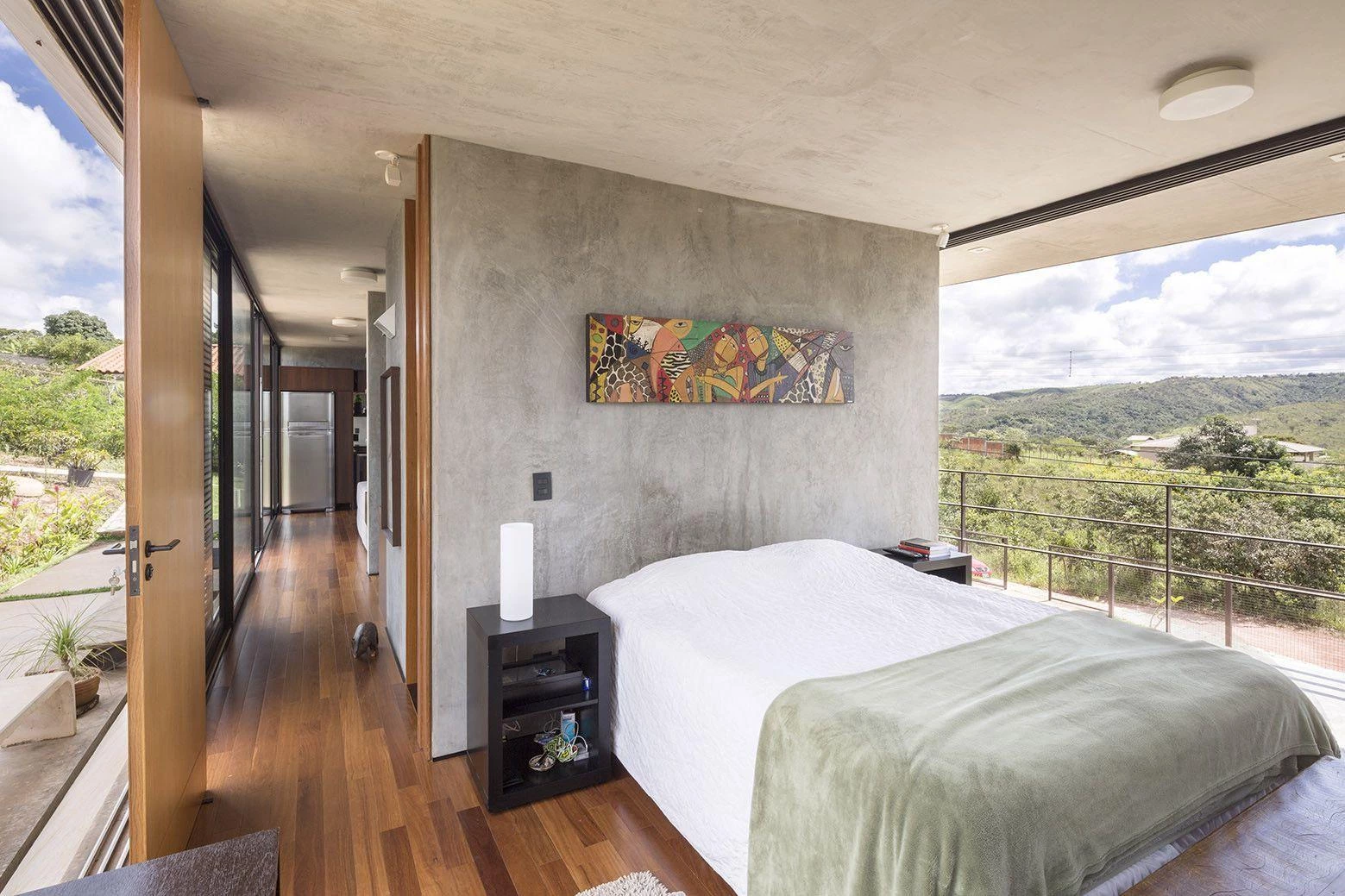
Photo: Reproduction / 3.4 Architecture
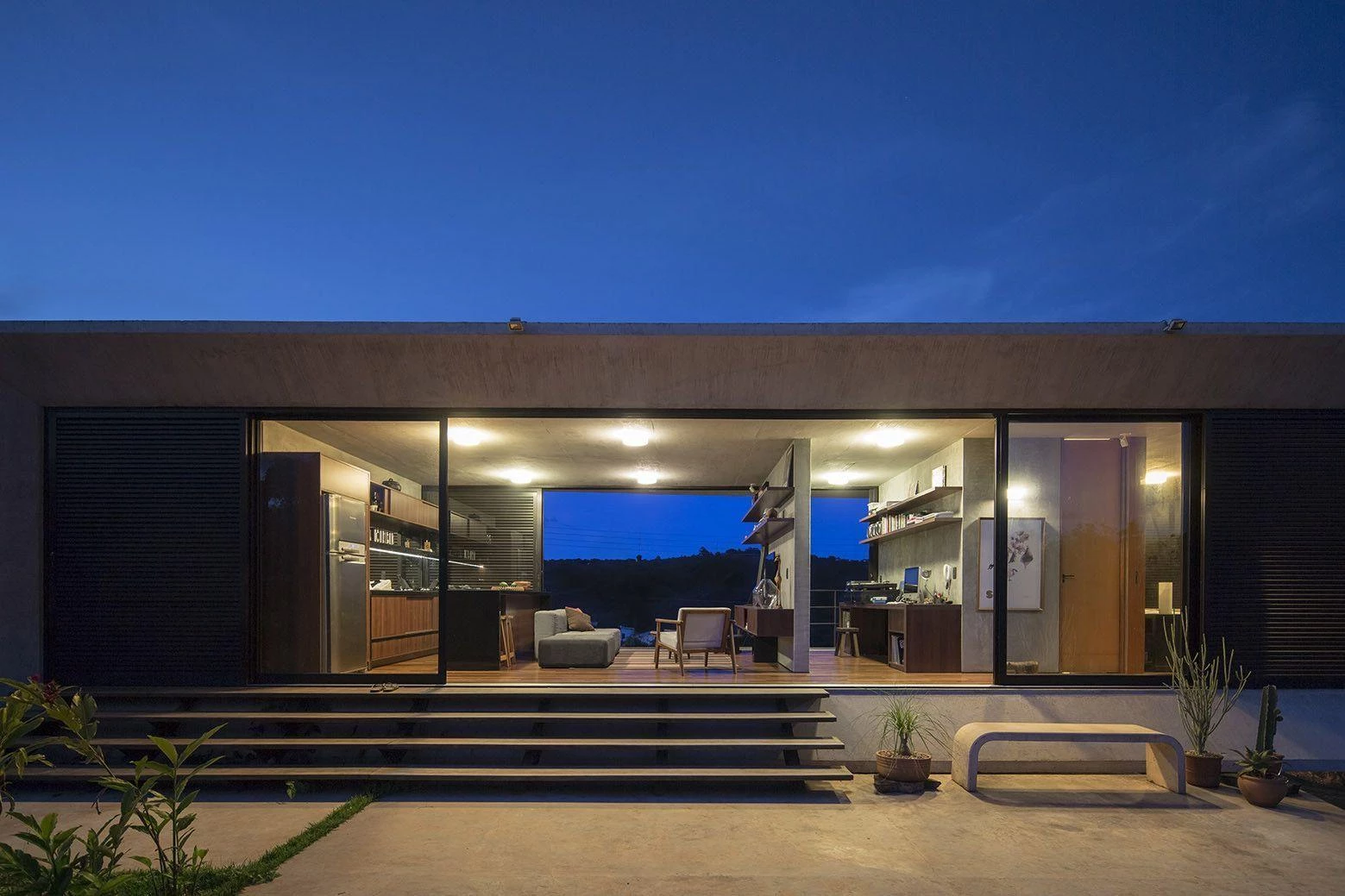
Photo: Reproduction / 3.4 Architecture
The spaces are divided by walls, but because the floor plan is modular, the sides of the rooms are open and it is possible to access any part of the house through the corridors.
The green area of the house also stands out and allows greater contact with nature. Glass, reinforced concrete, and wood are very present.
More Inspirations for Building a Modern Home
Modern houses are large constructions, with a simple but imposing design. There is some difficulty in reconciling the amplitude of modern facades in smaller houses, but it is important to raise the possibility of betting on a modern and vertical facade.
So even though the terrain is smaller, it's possible to work on a very characteristic front end and a smart, eye-catching interior.
To that end, check out 50+ photos of modern tiny houses for inspiration when it comes time to plan and decorate yours:
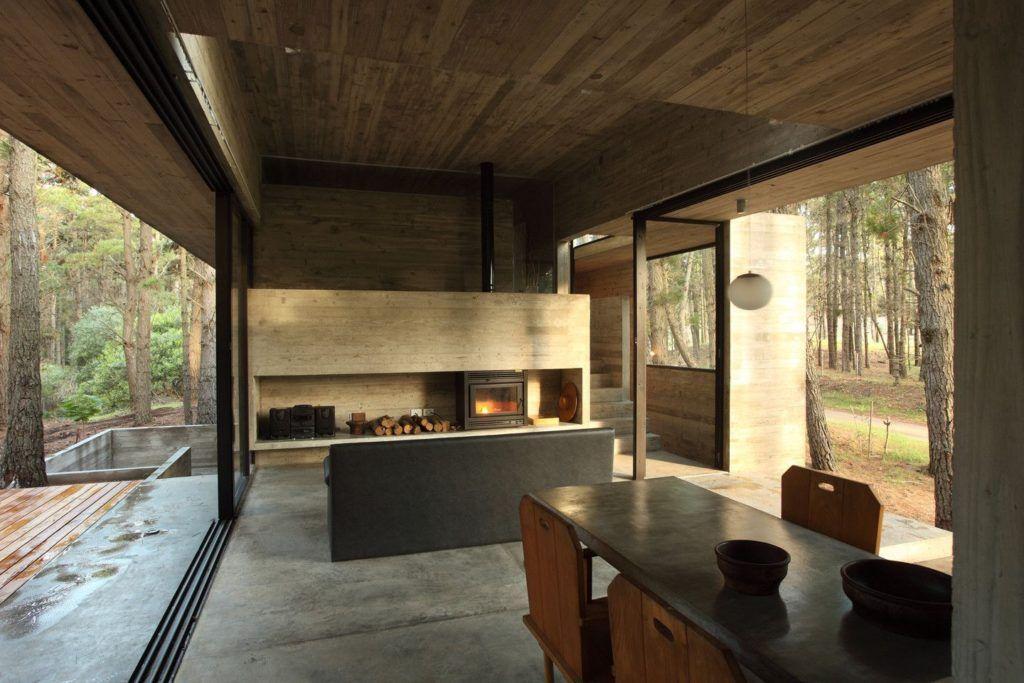

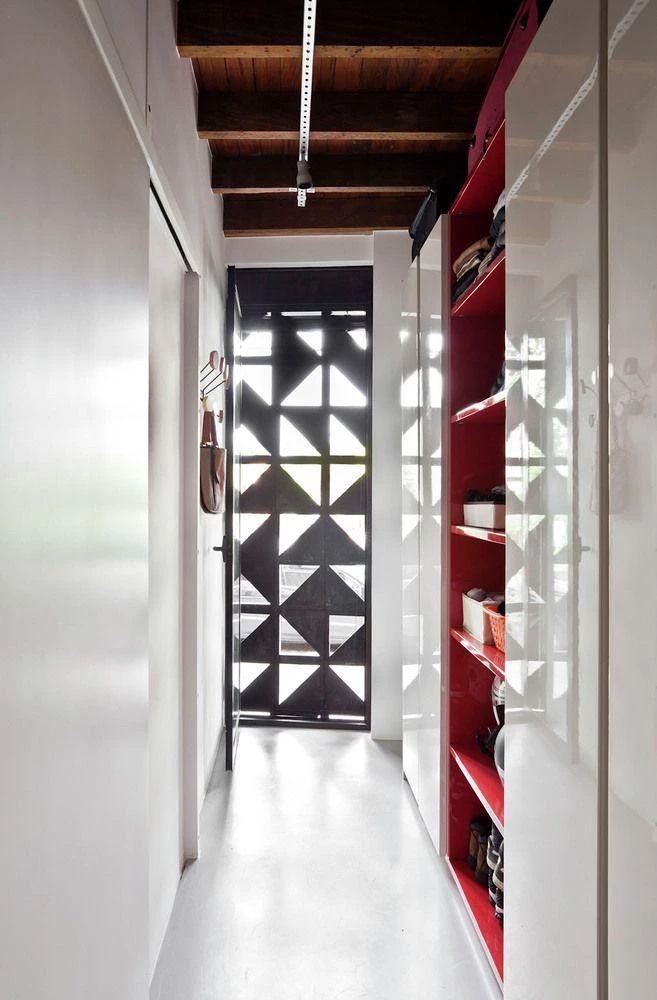
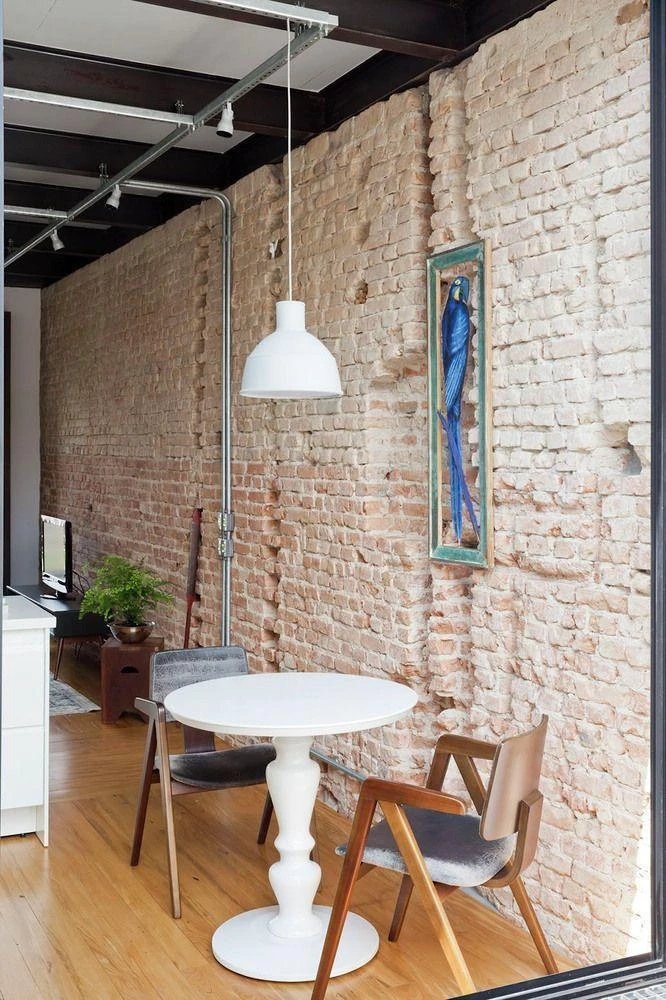
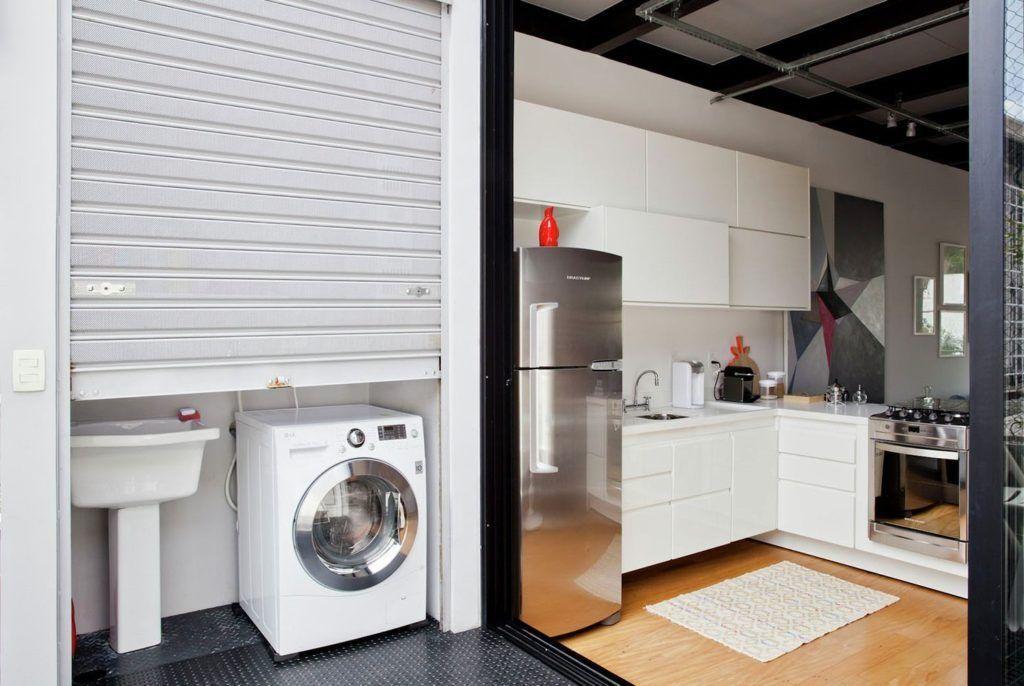


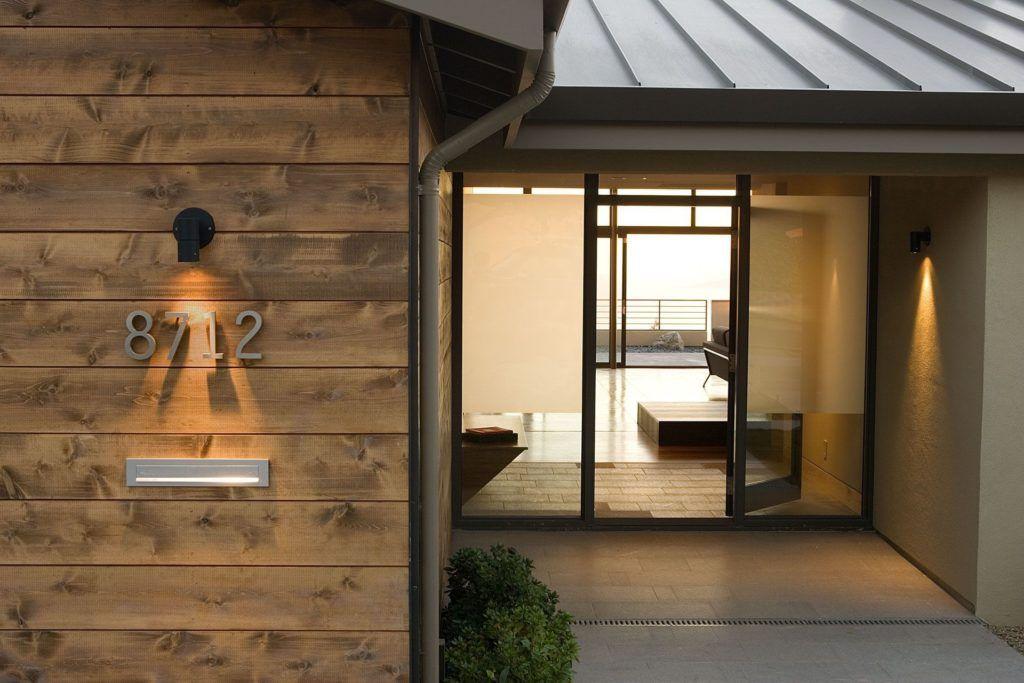


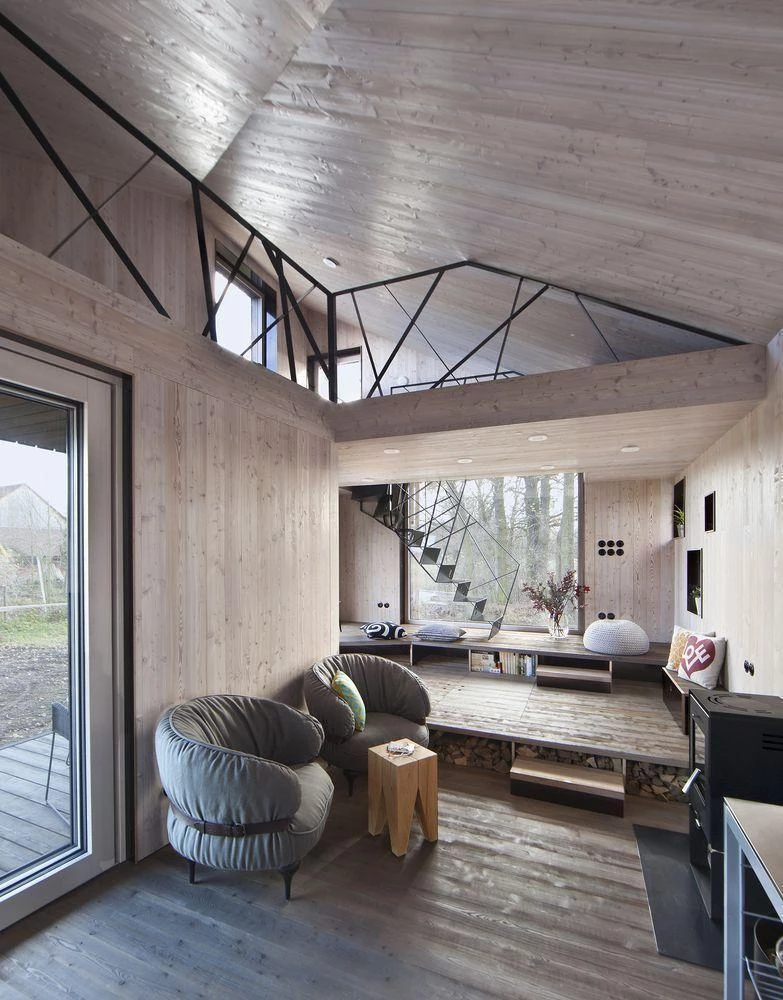
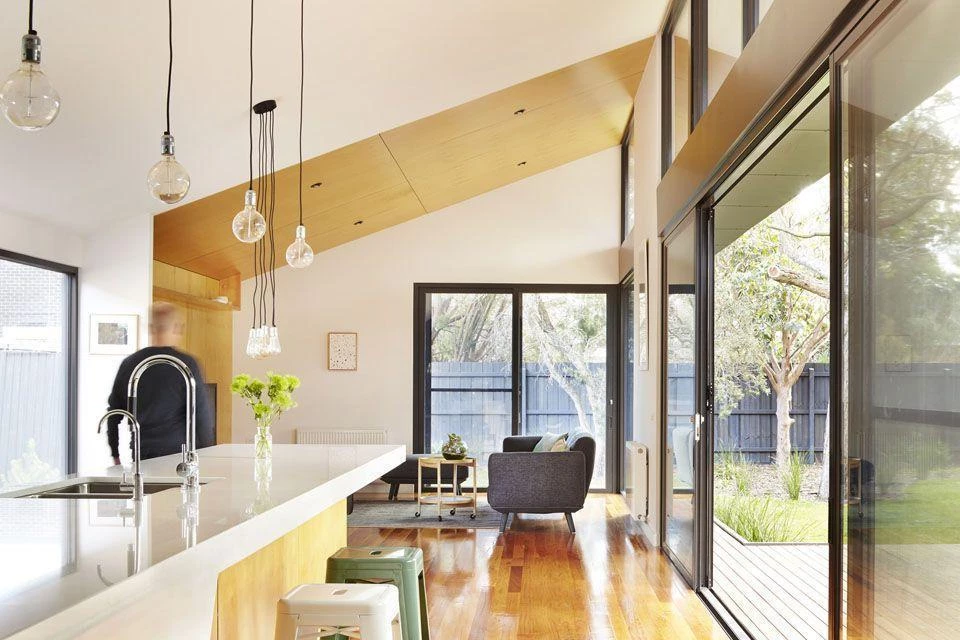
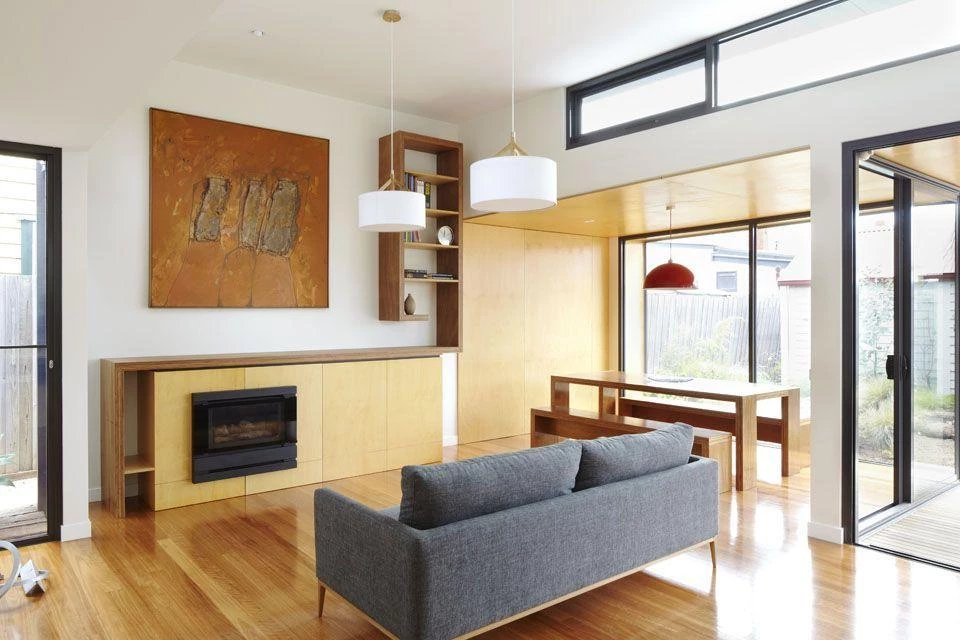
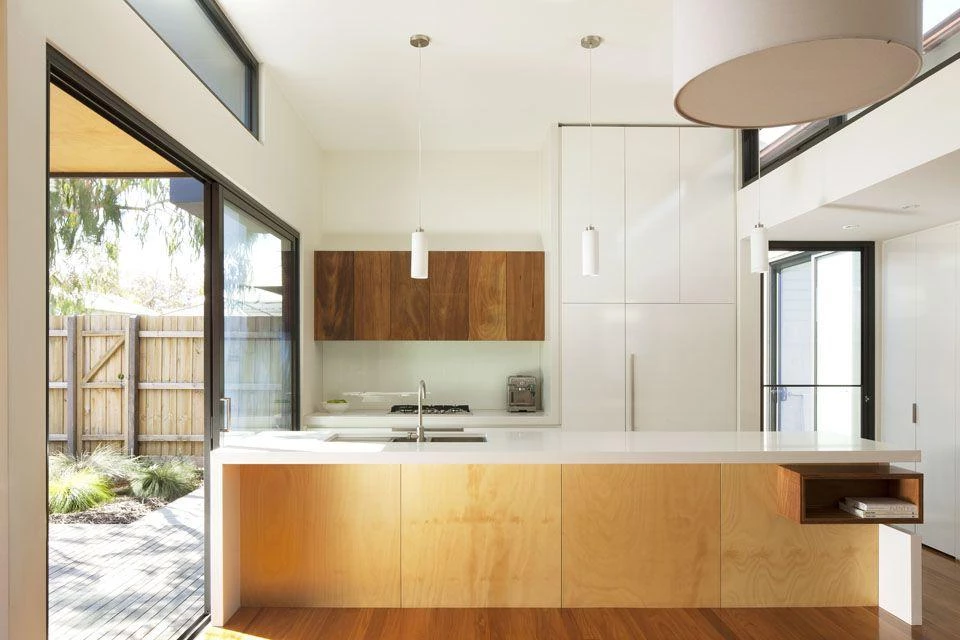
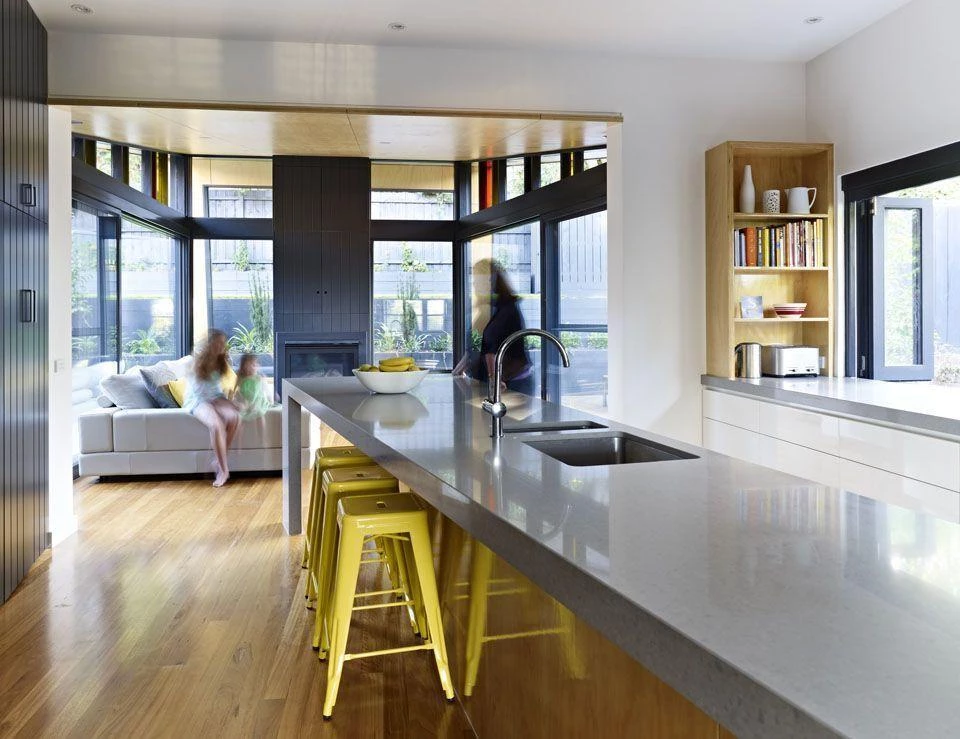
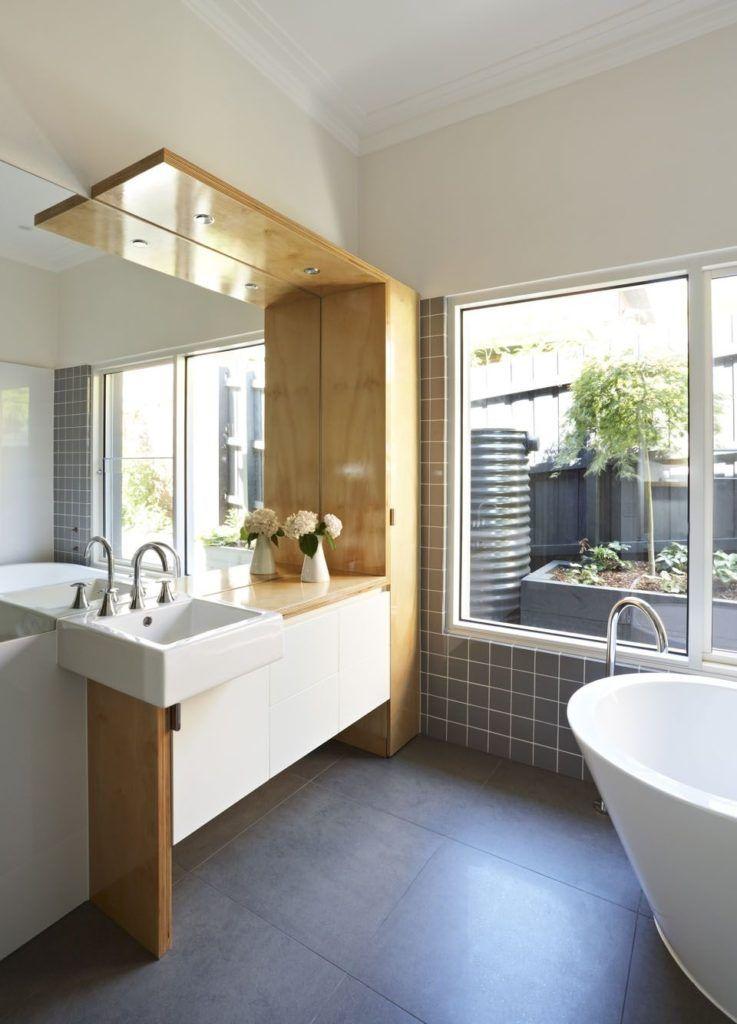
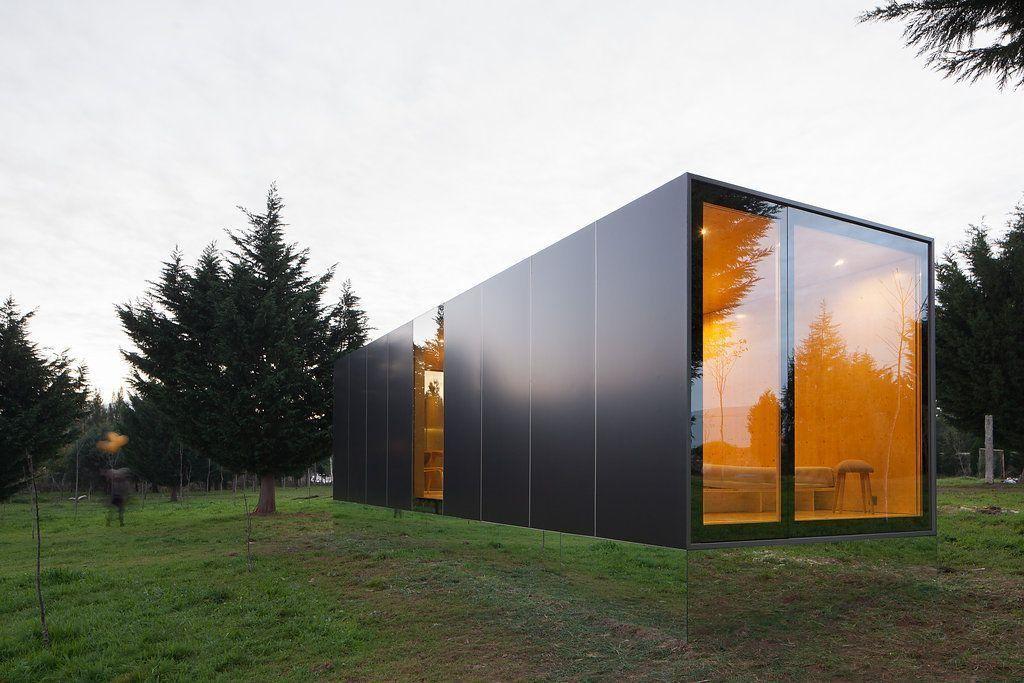

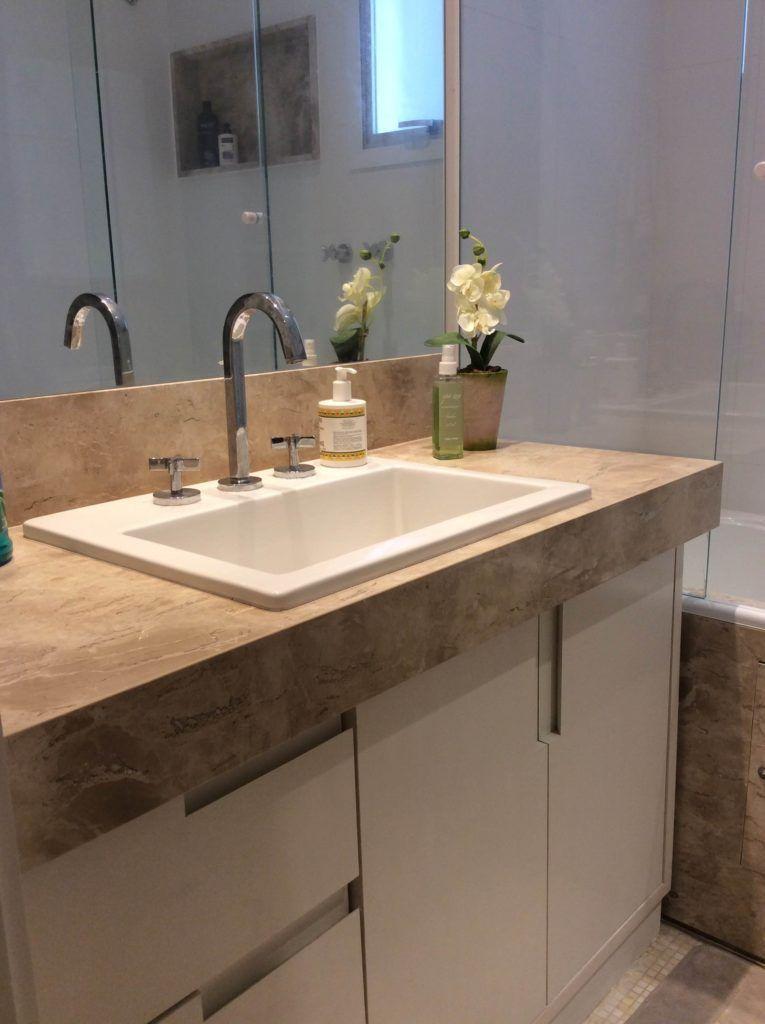

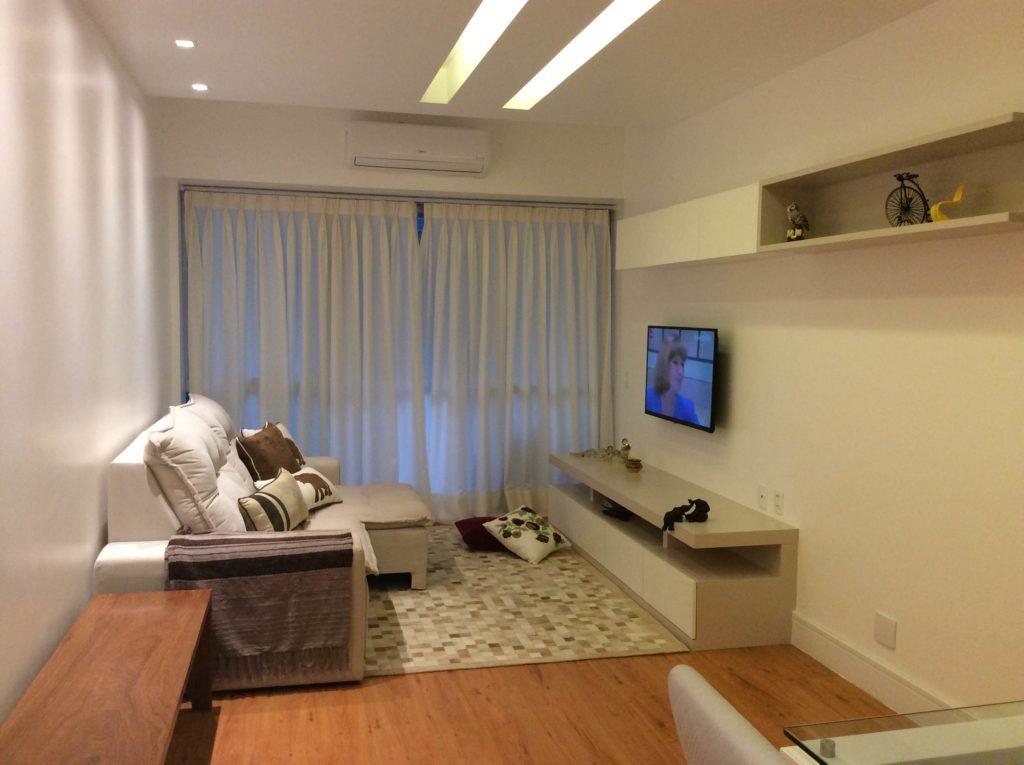
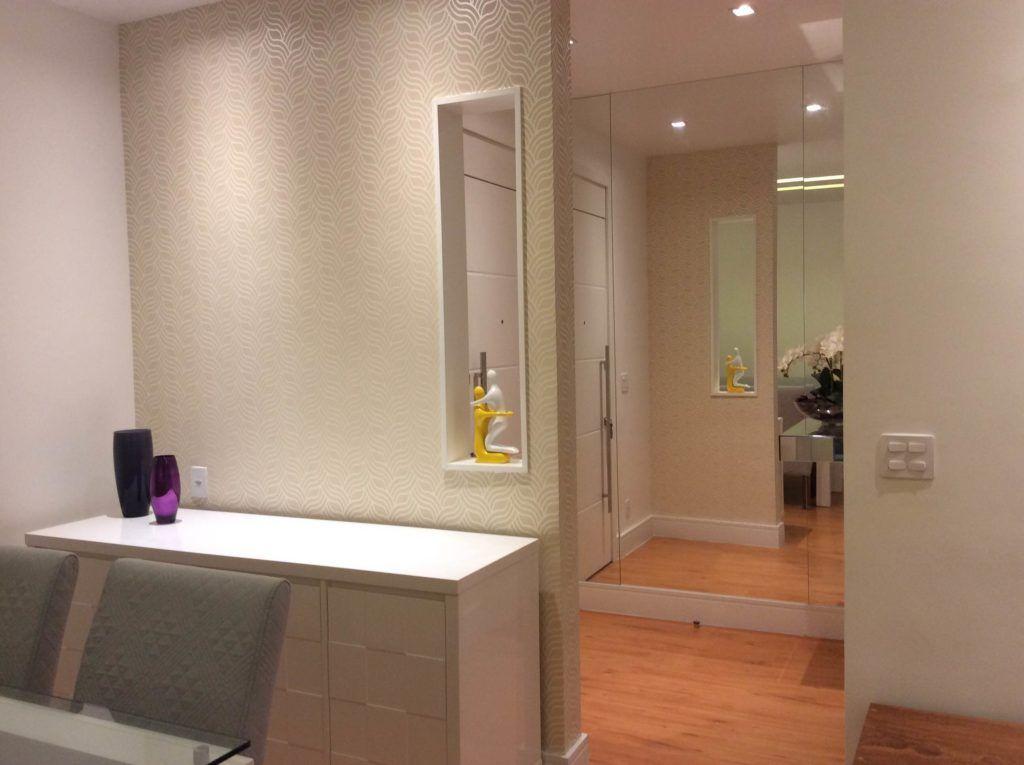

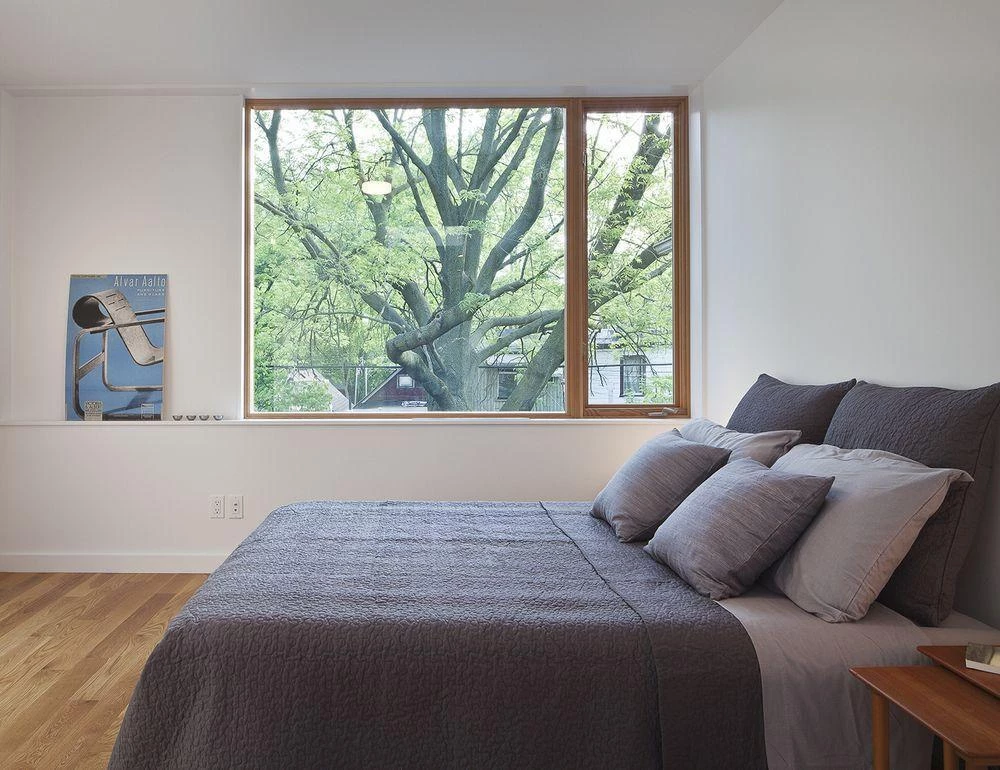
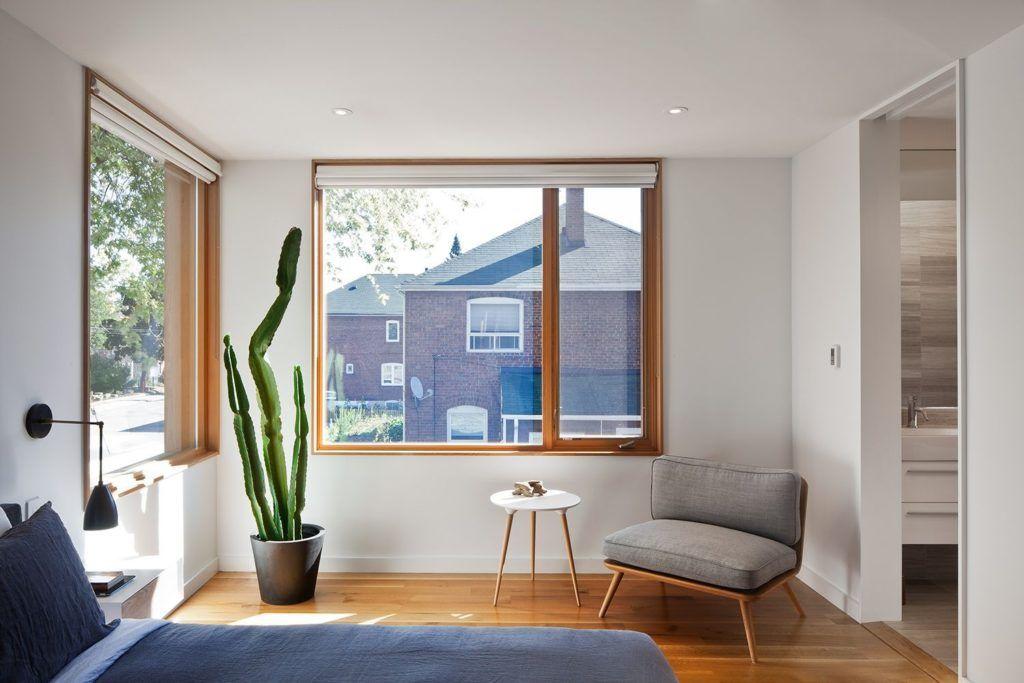
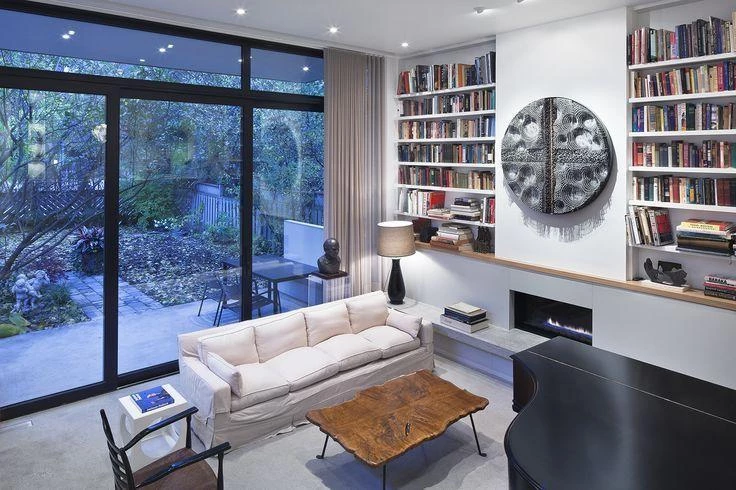
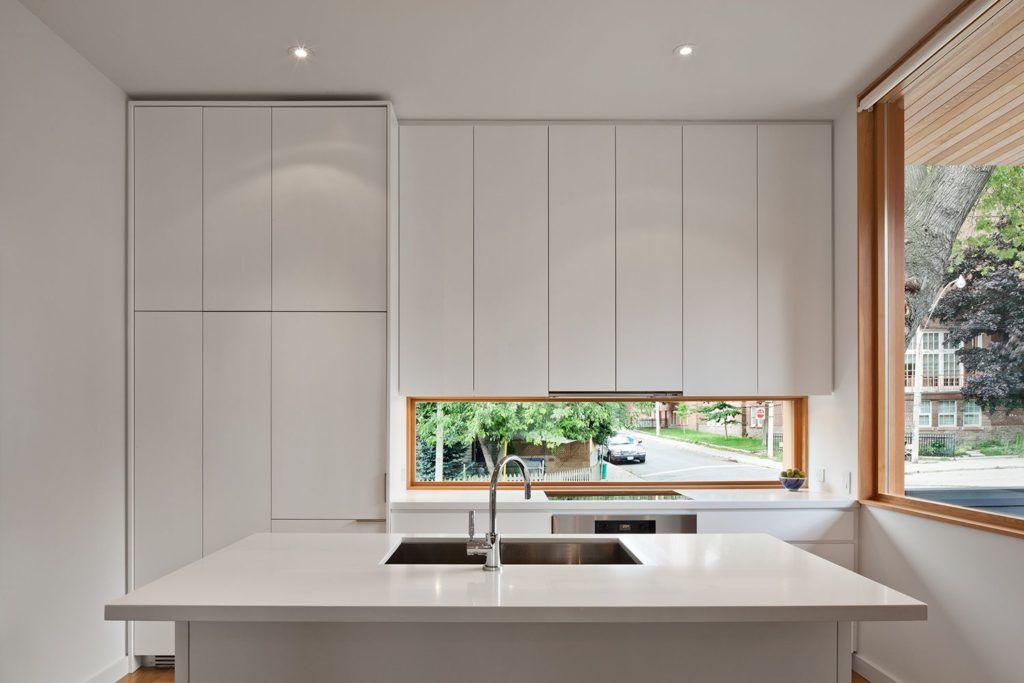
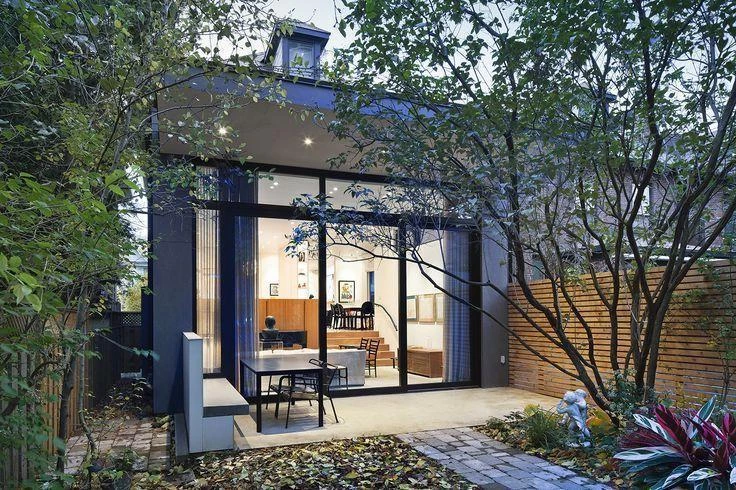
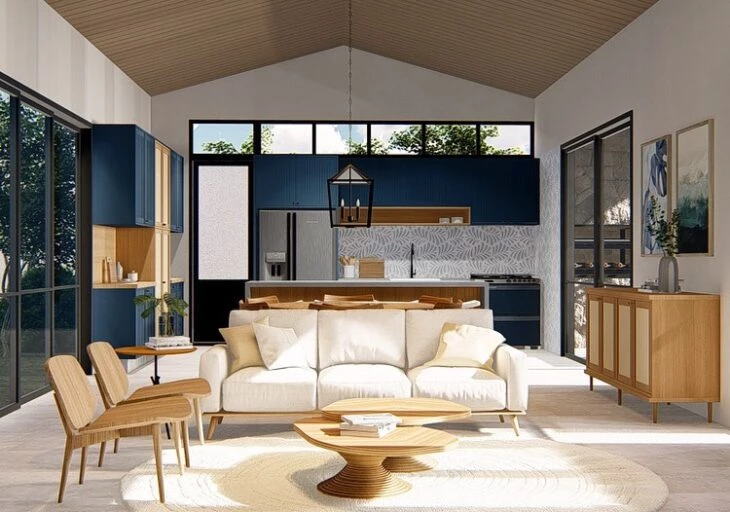
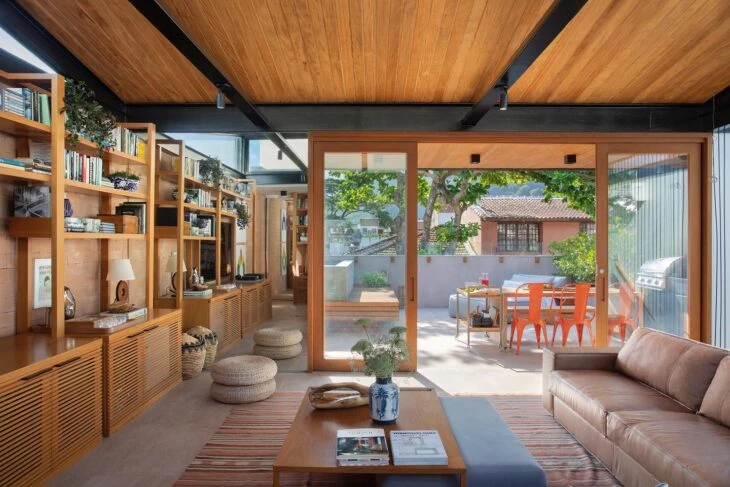
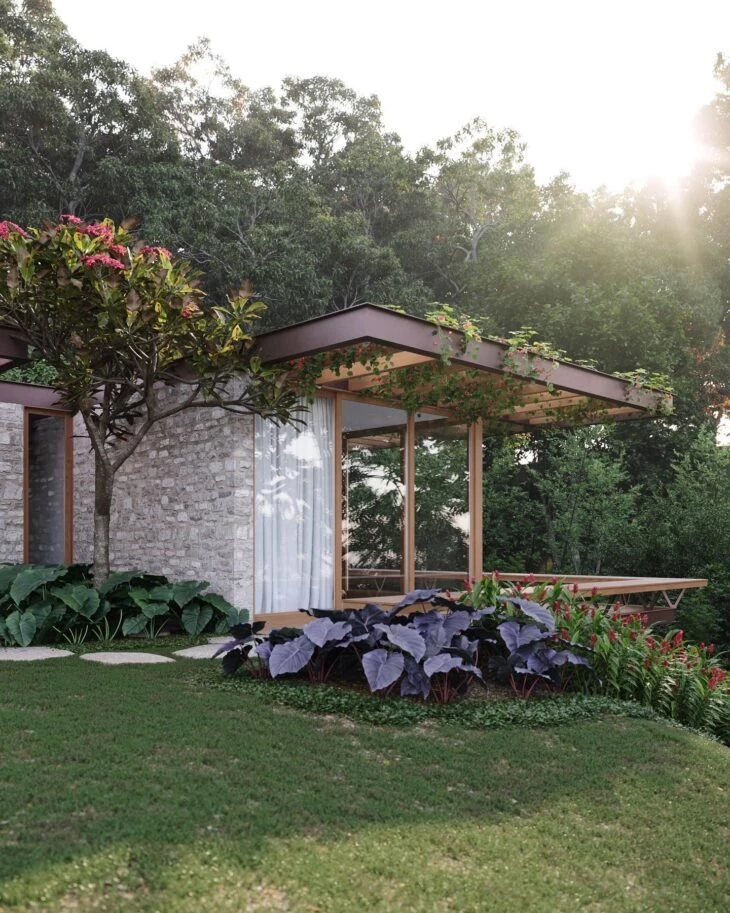
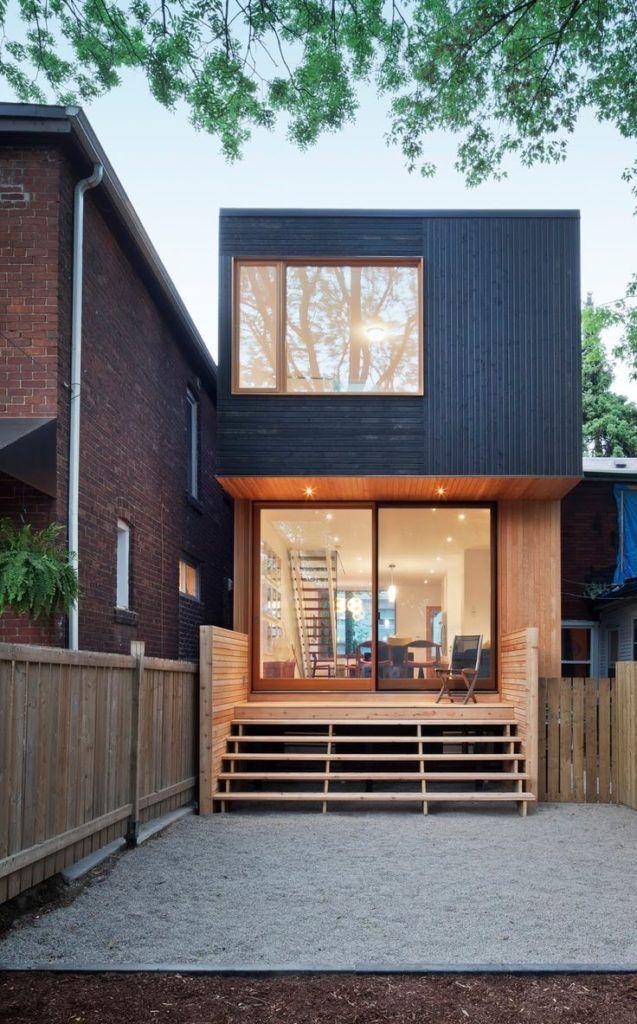
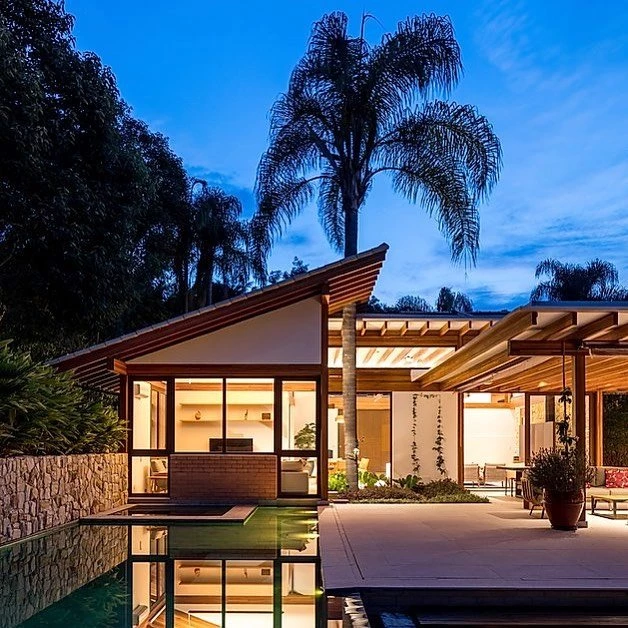

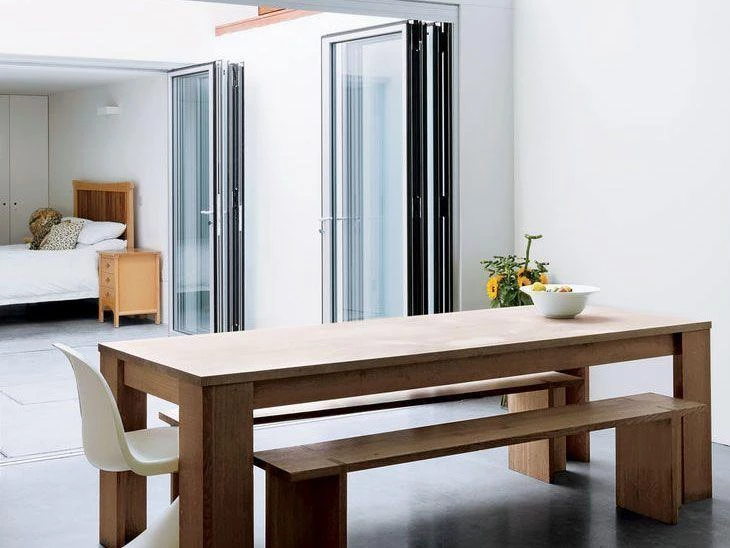
If your dream house is an original space, with a light and functional decoration and no room for clutter and cleaning, get inspired by the pictures and tips to create your modern and small house! But remember: modern or classic, big or small? the important thing is that your little corner has your face and brings enough comfort to call it home.


